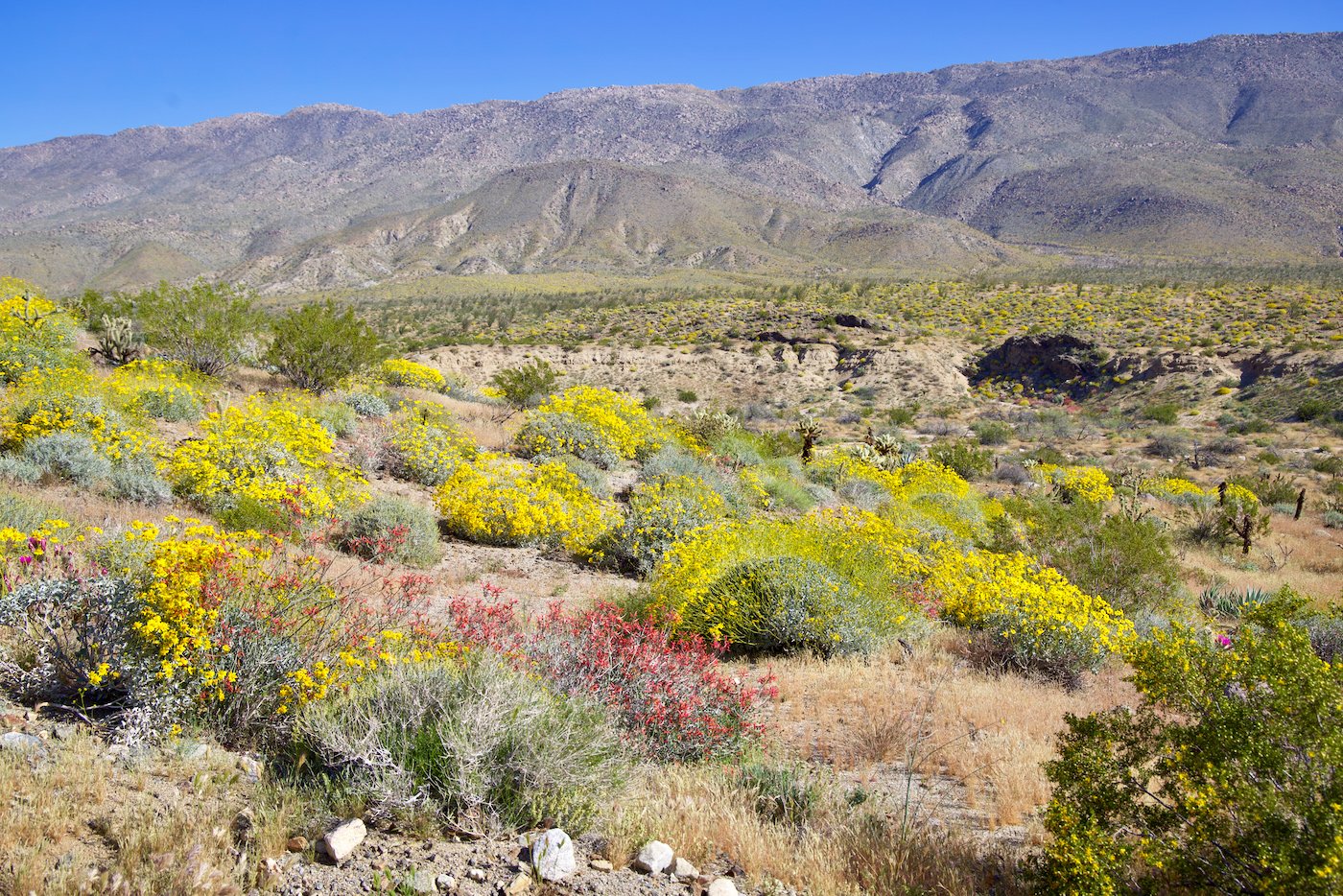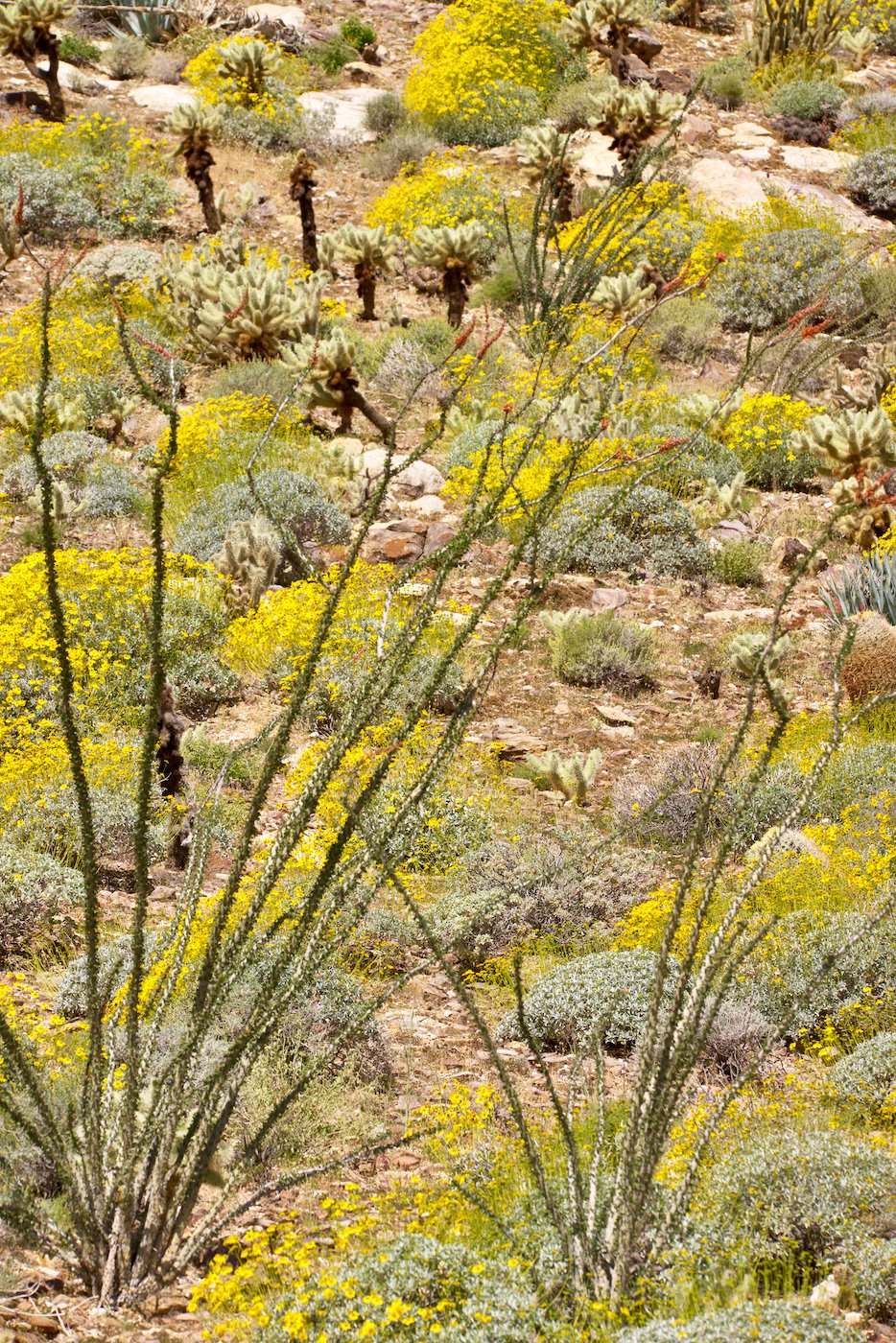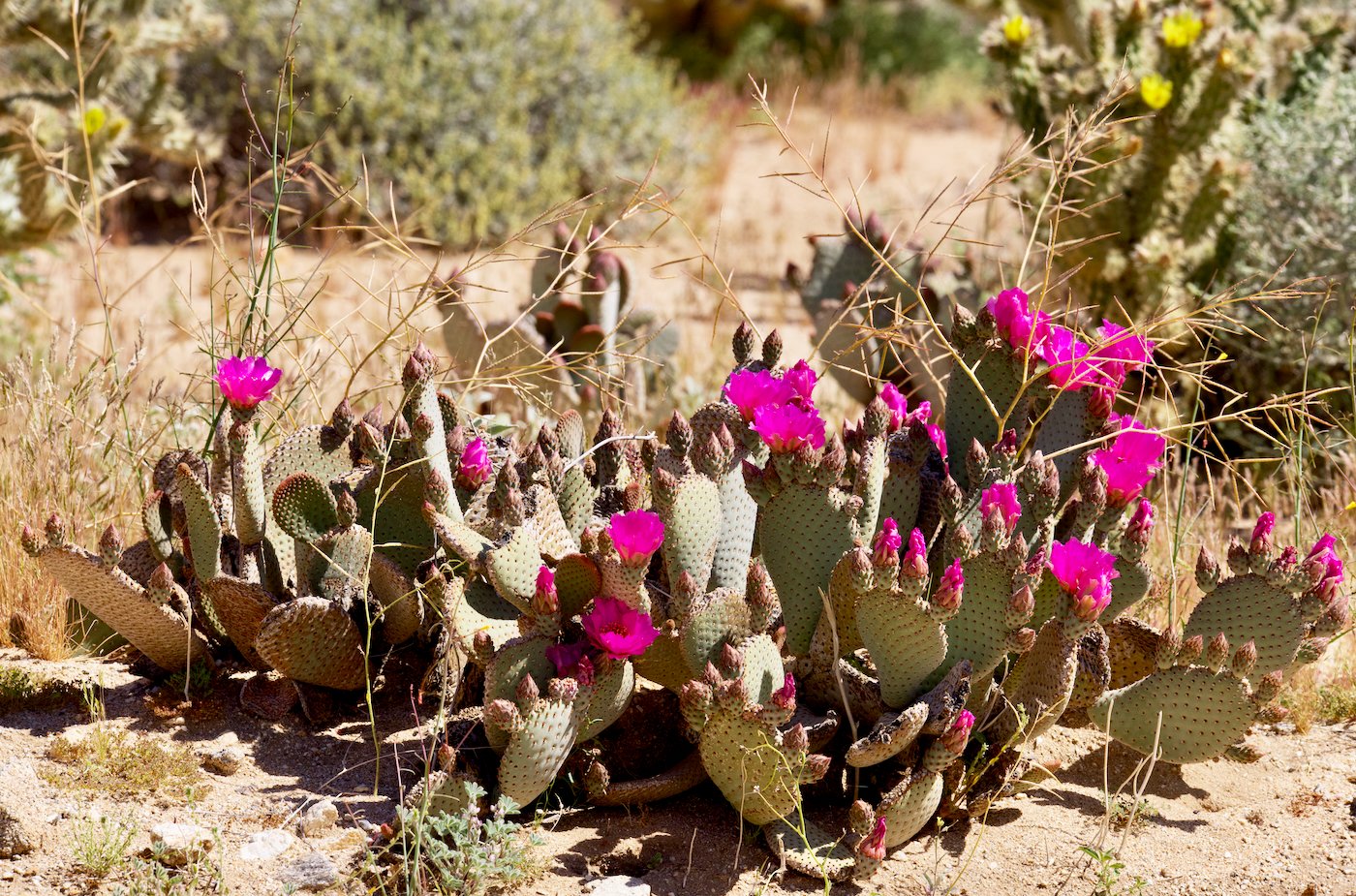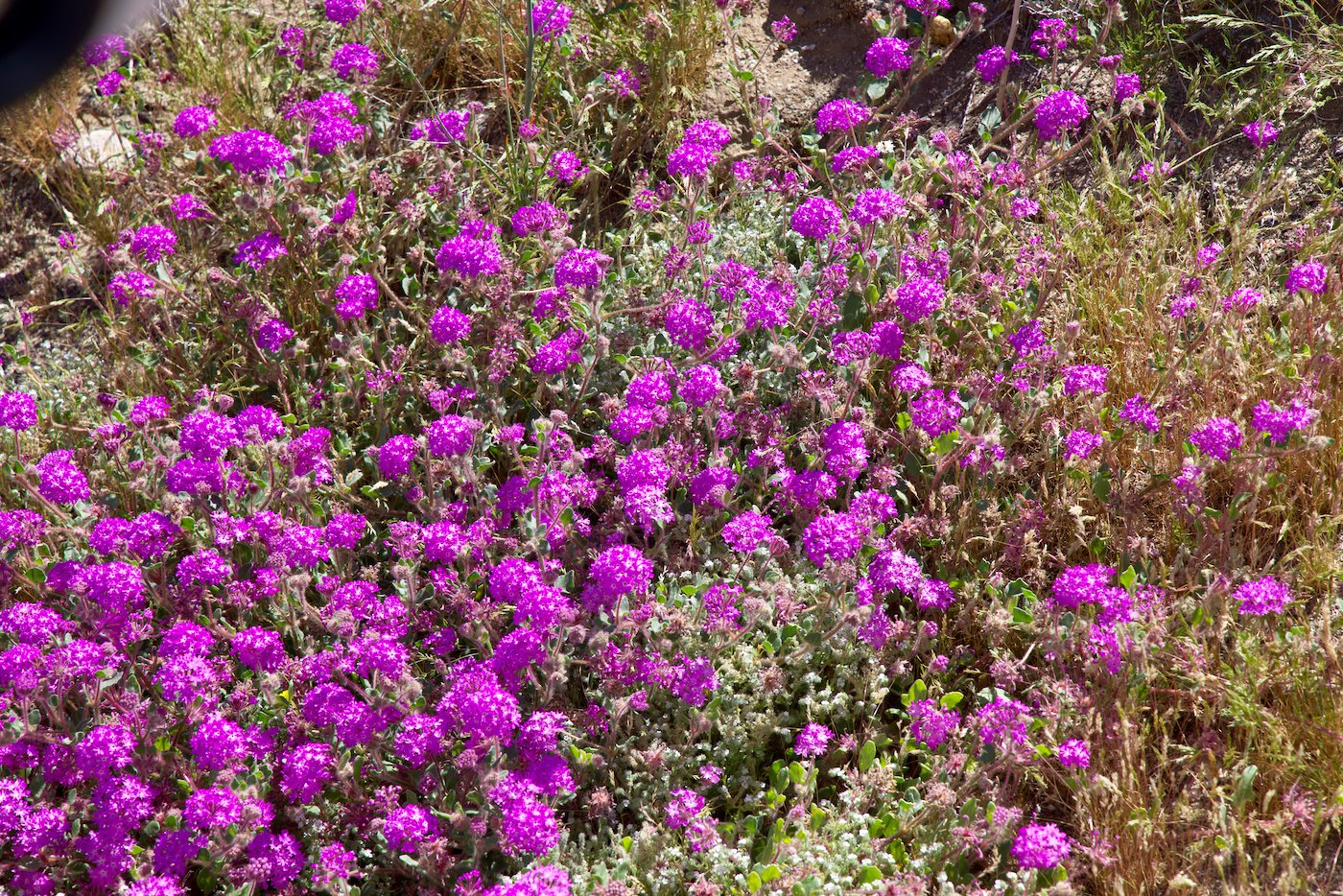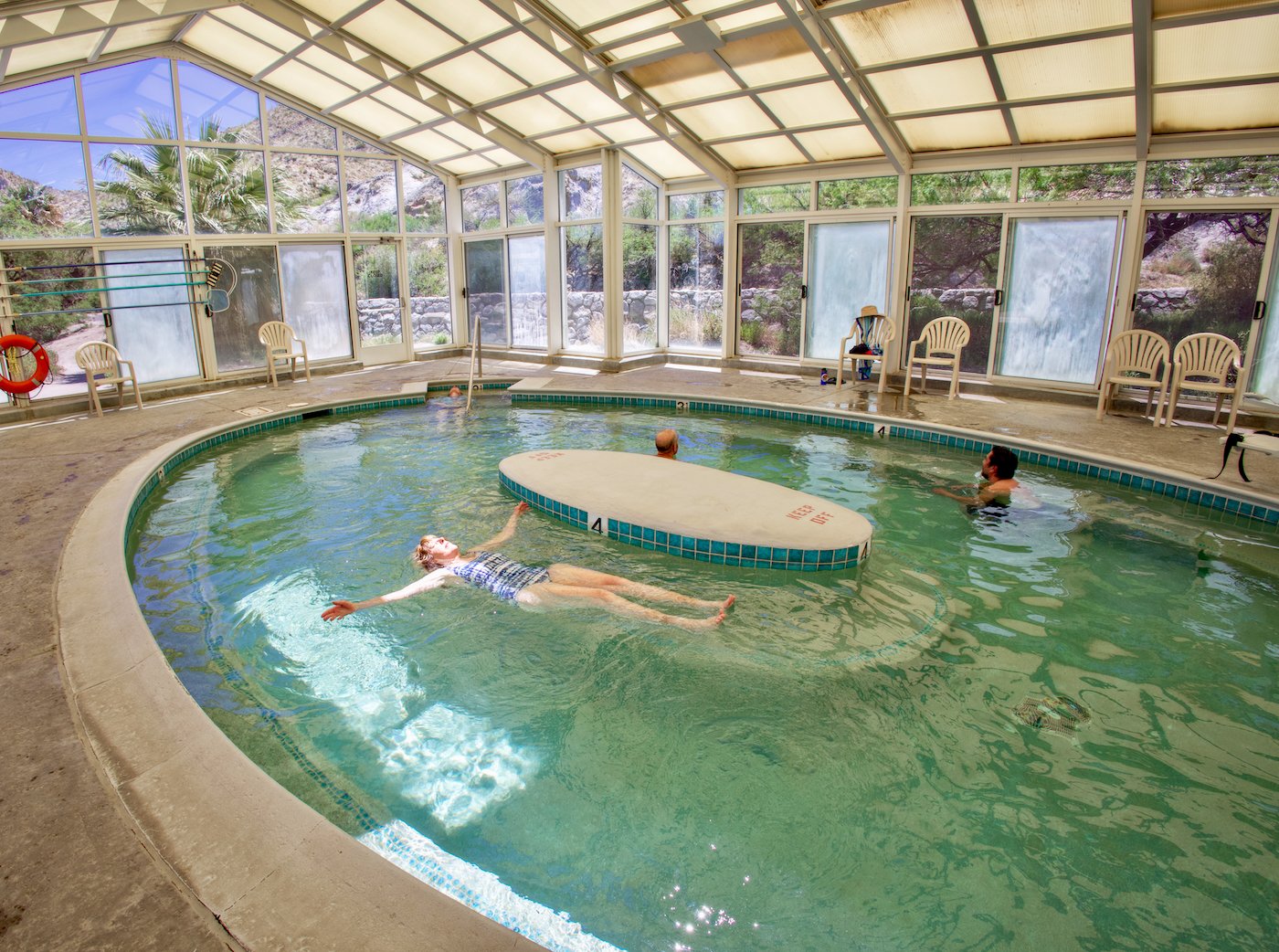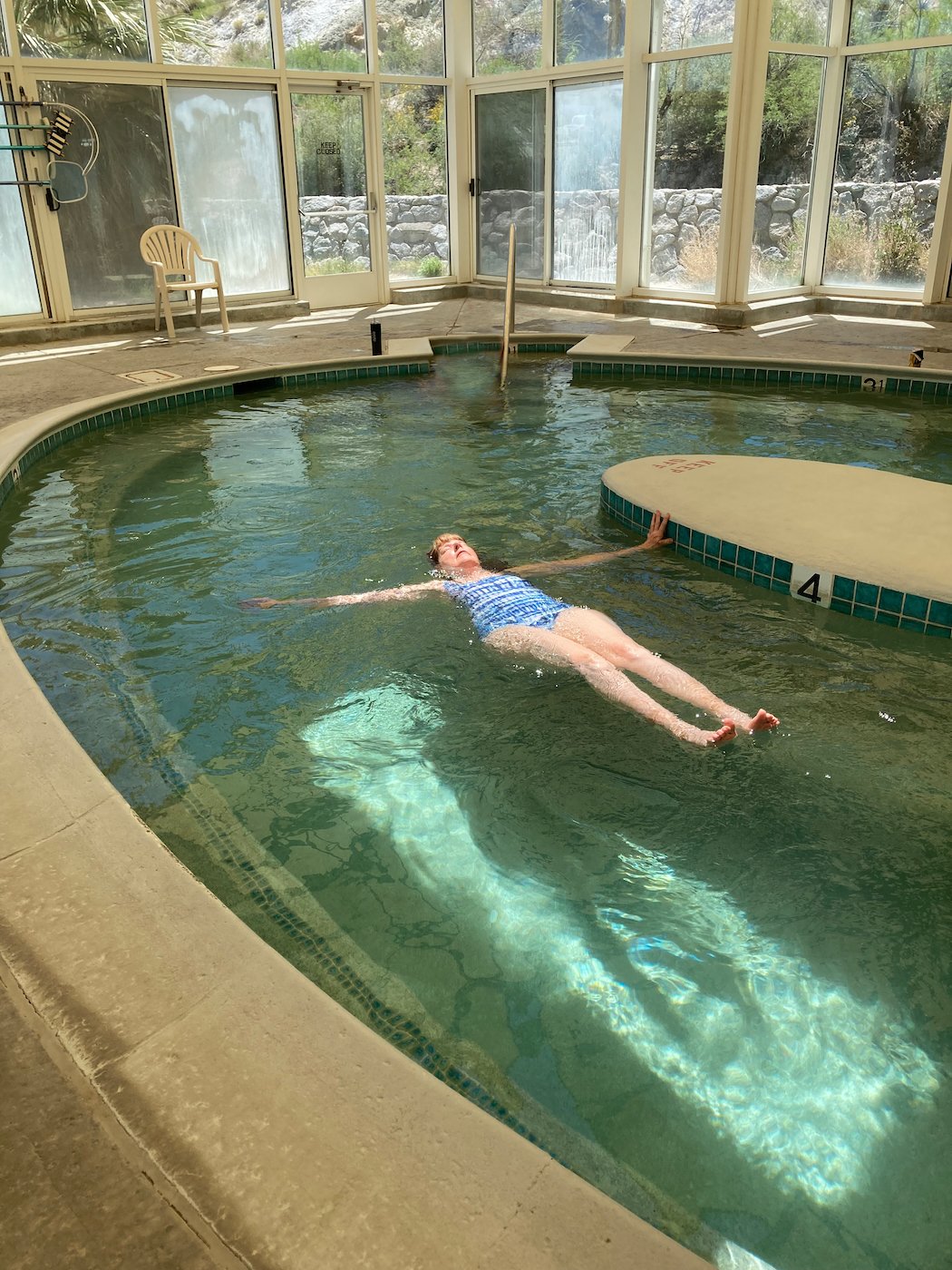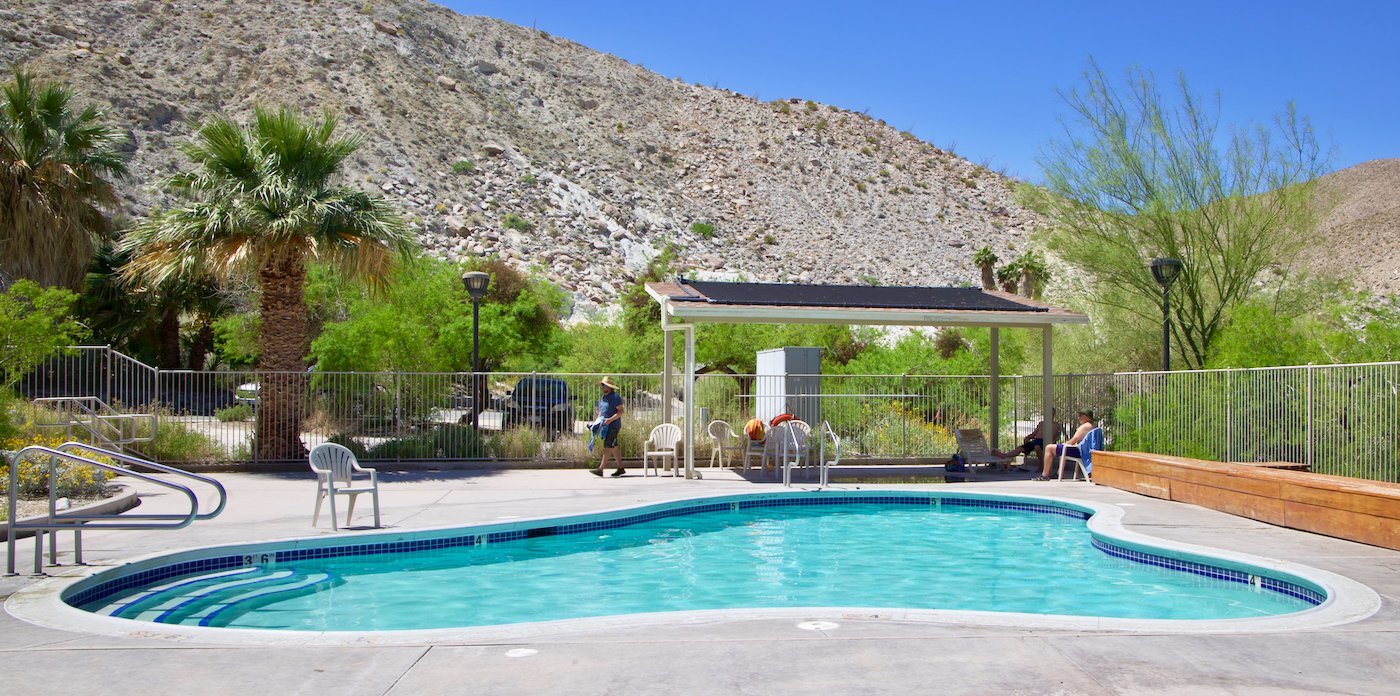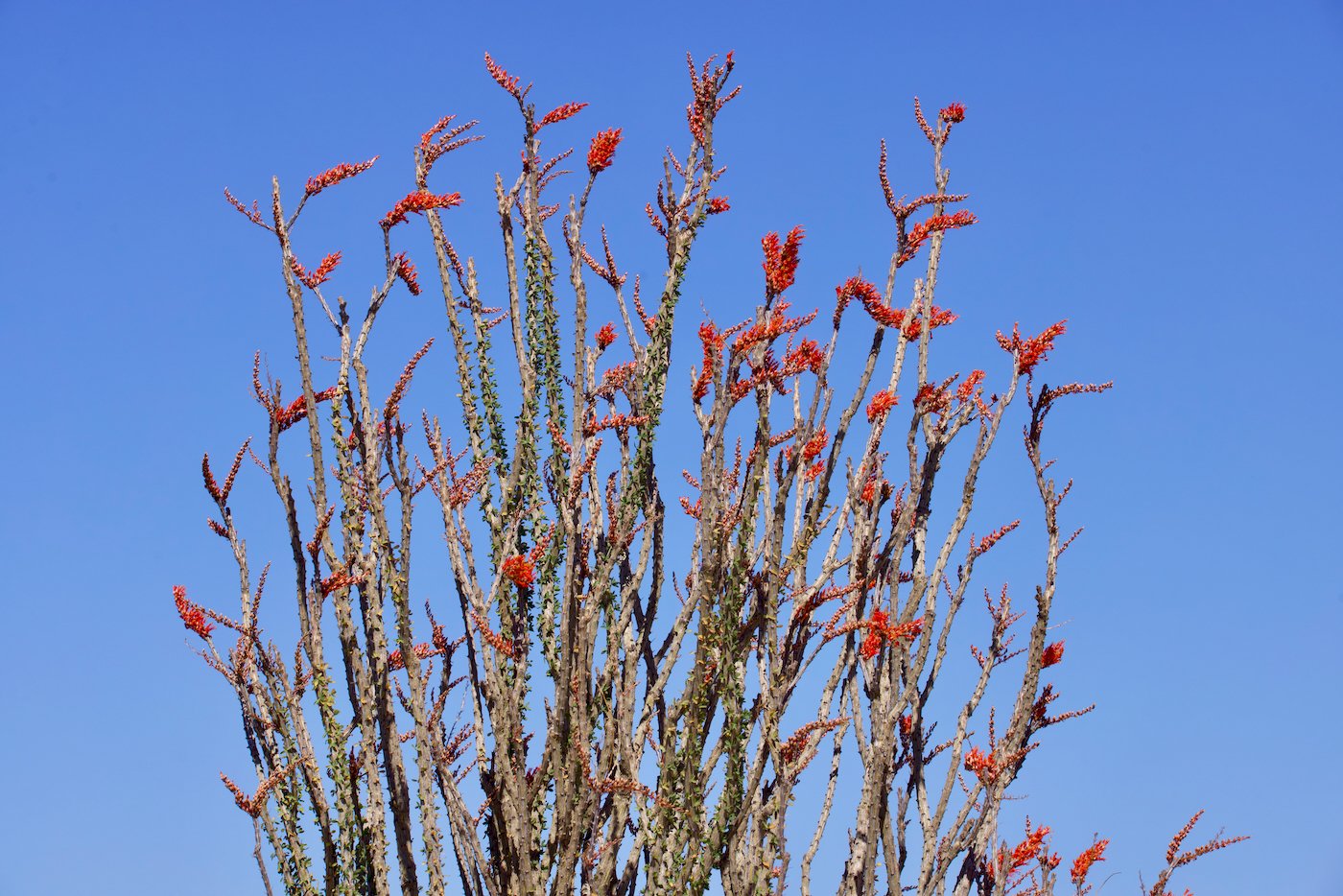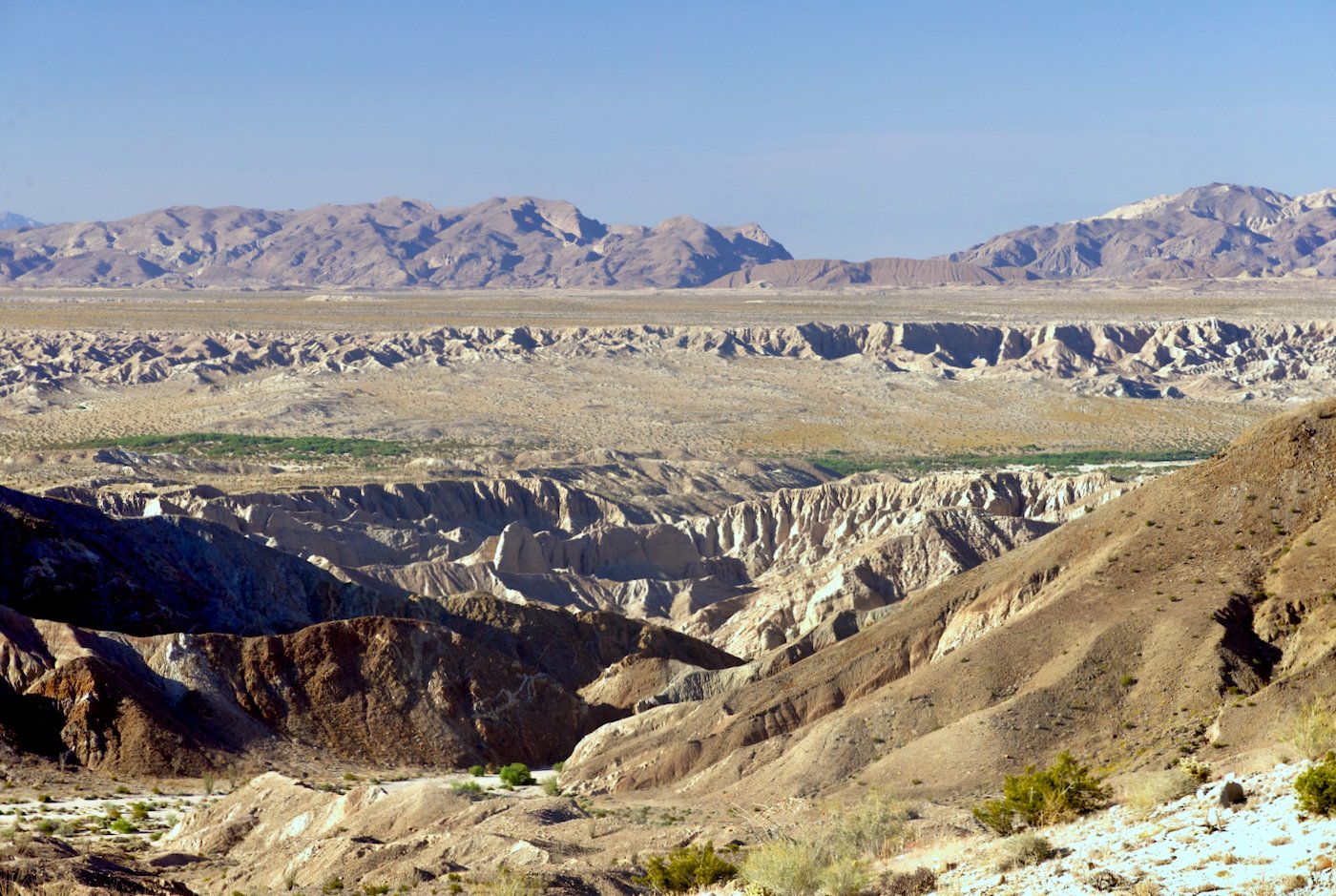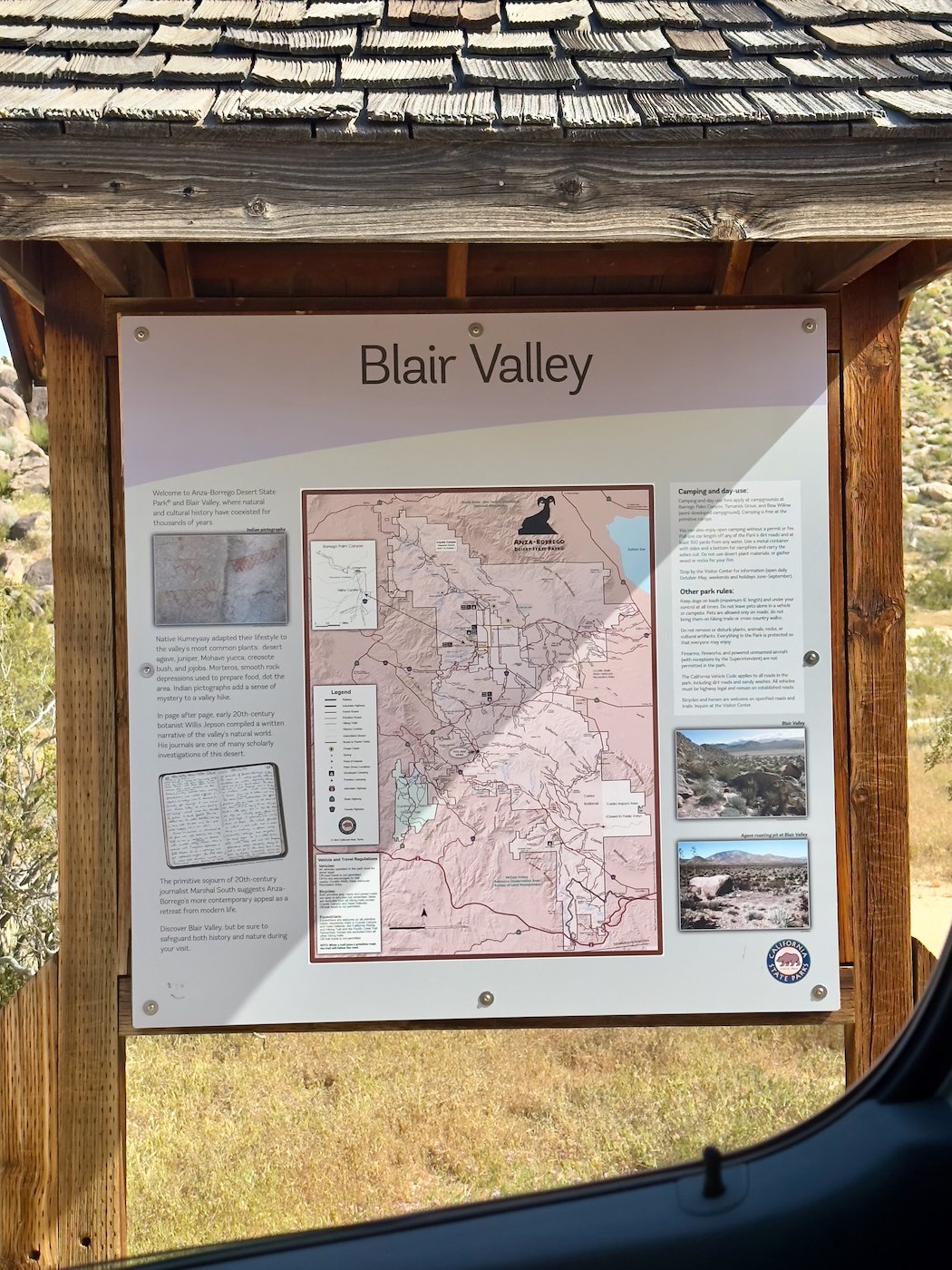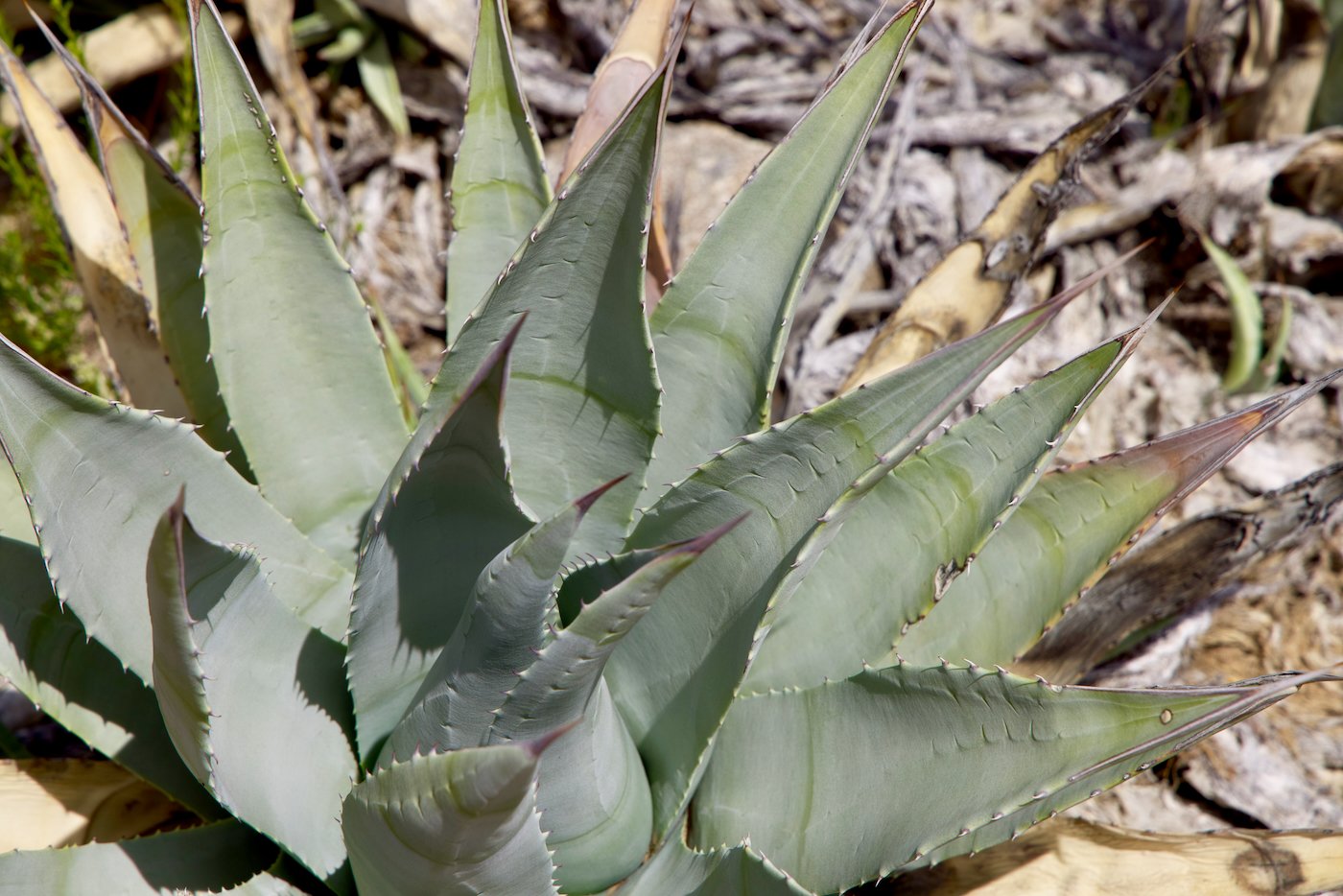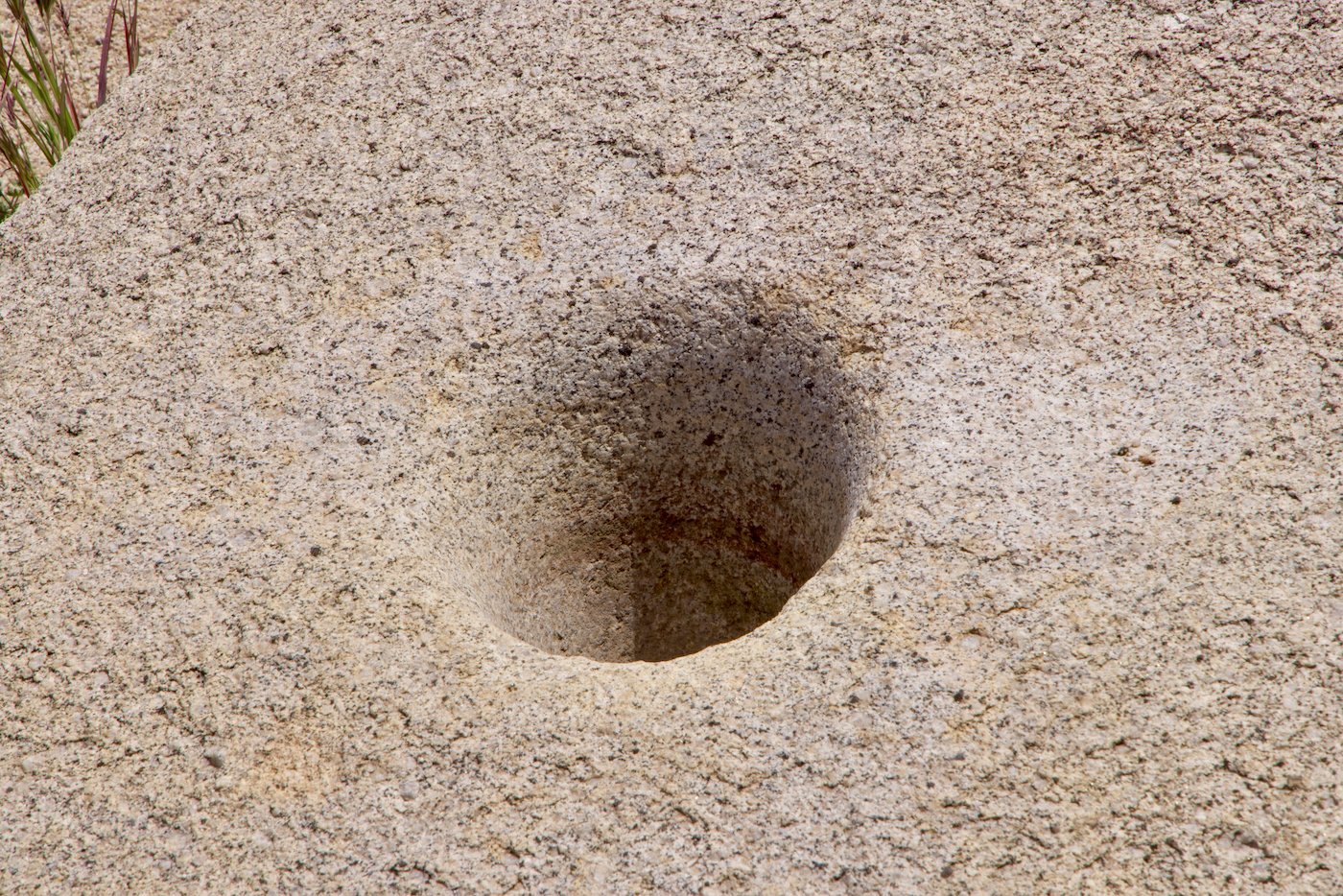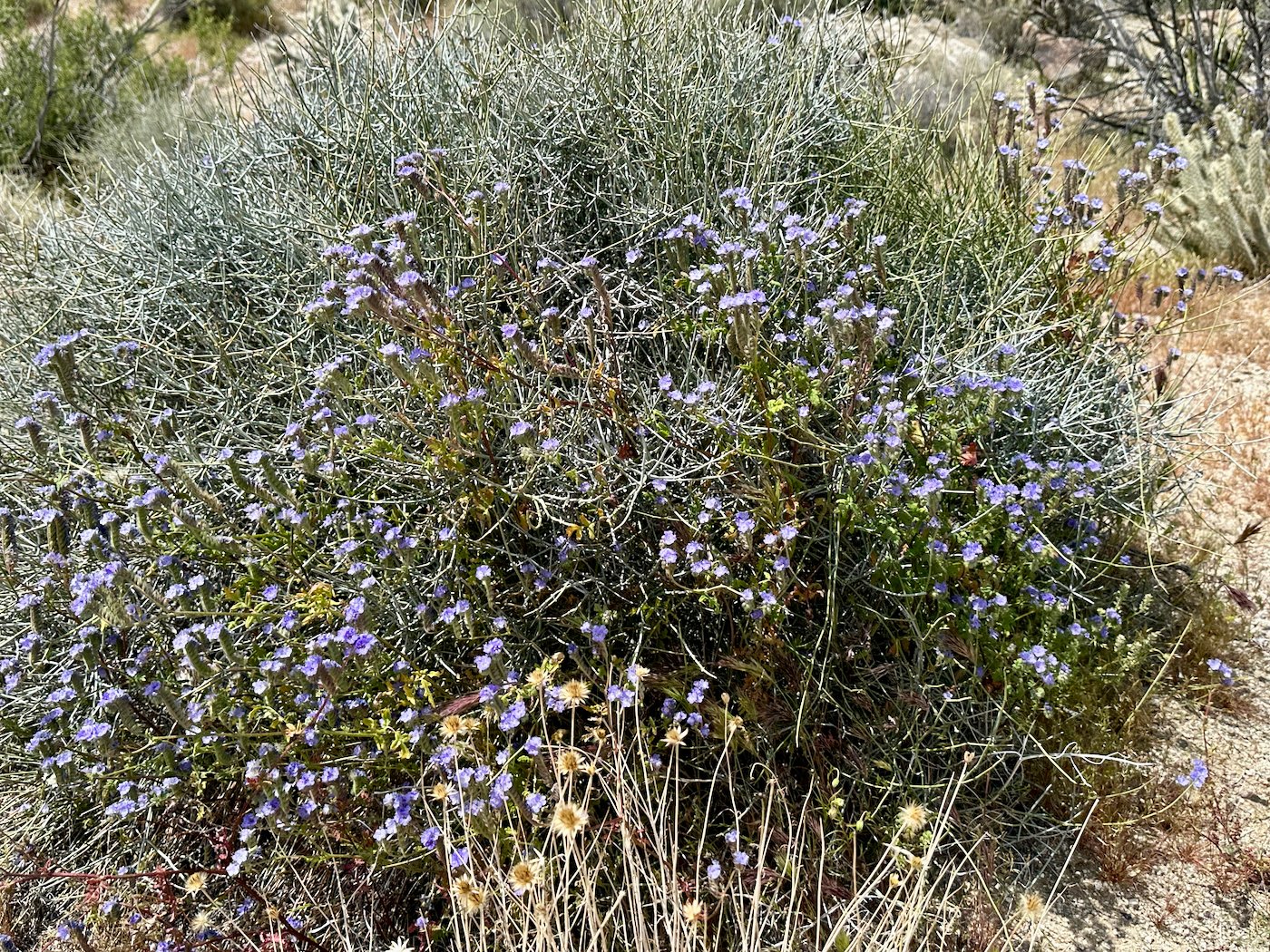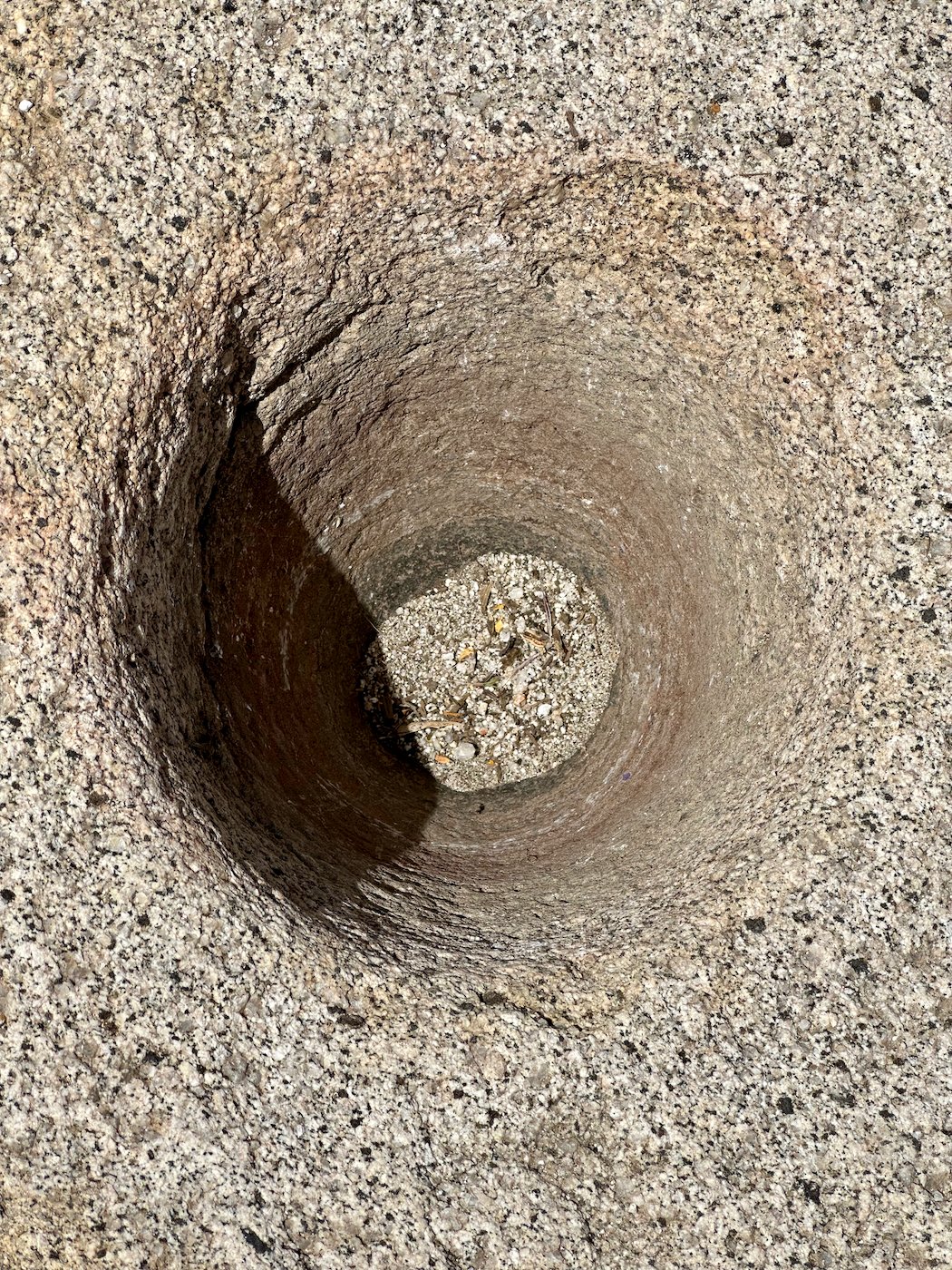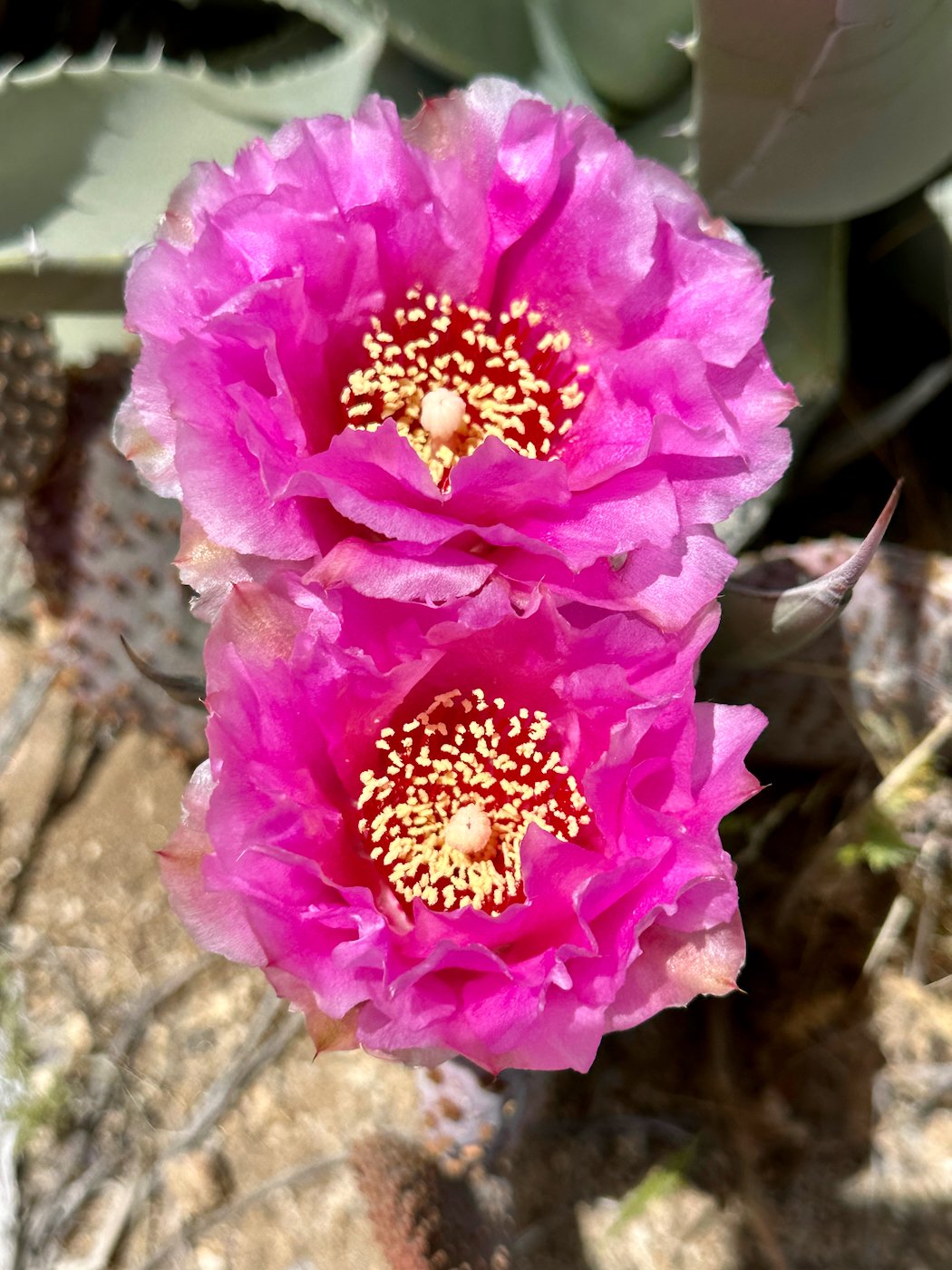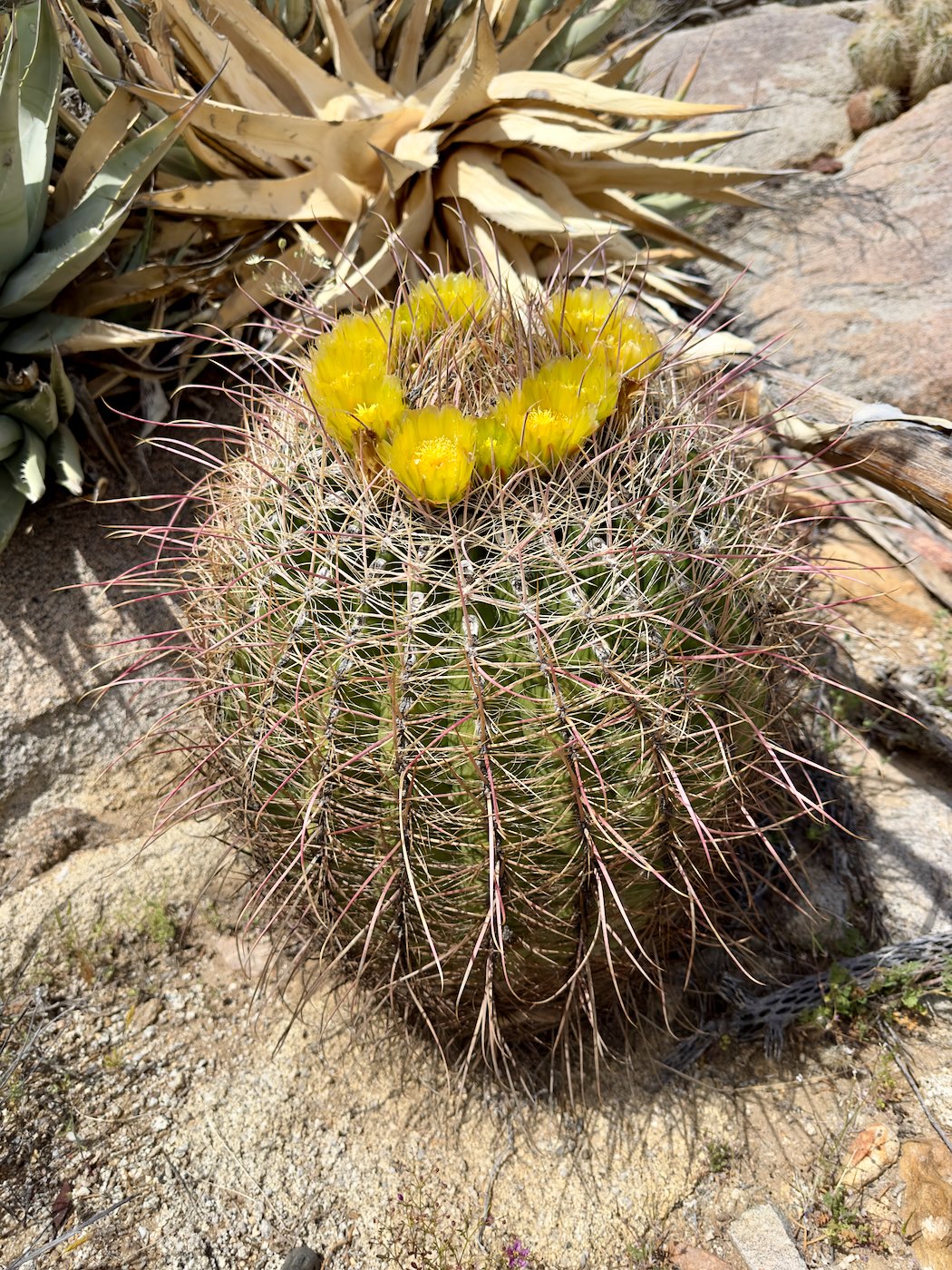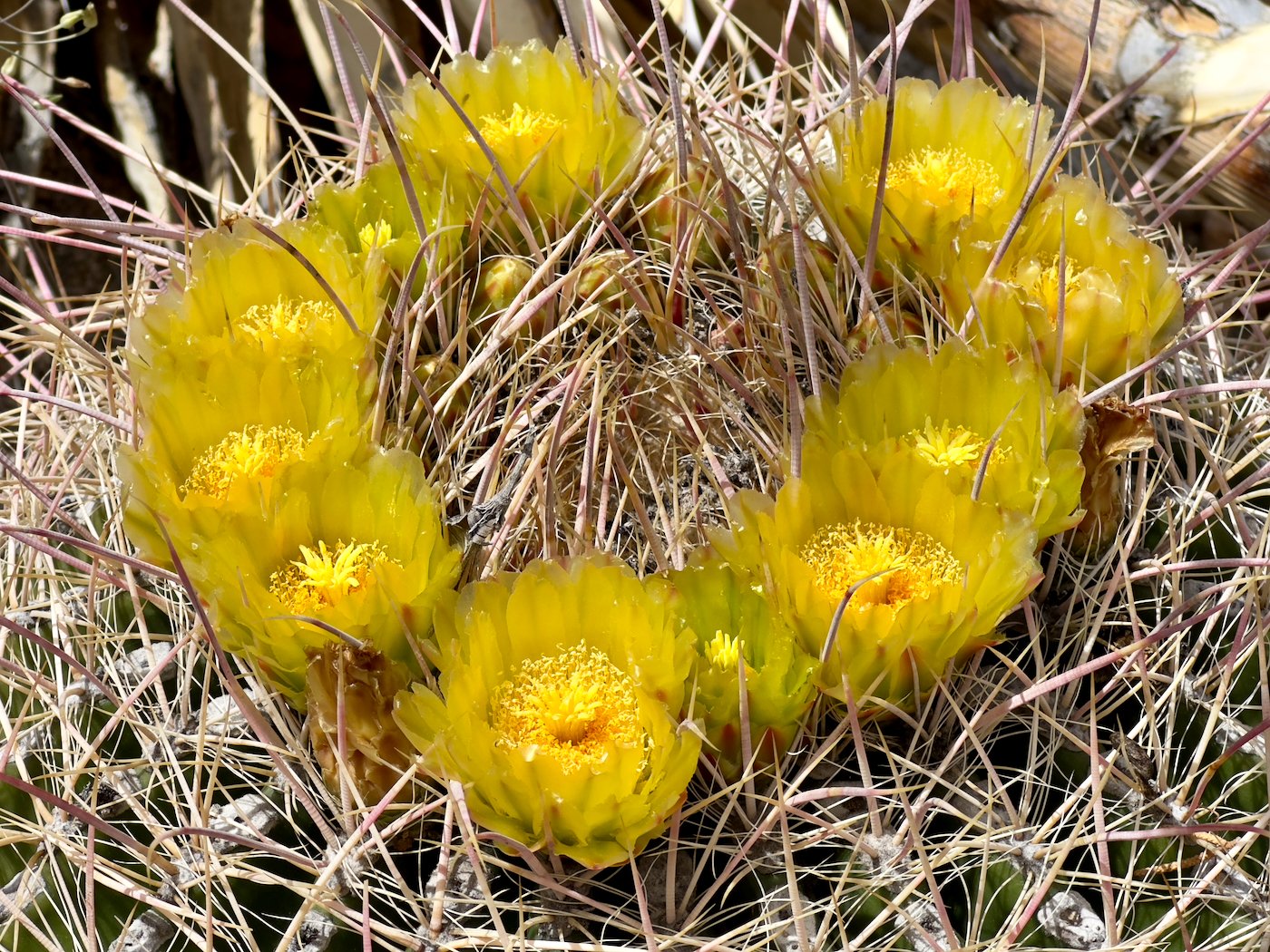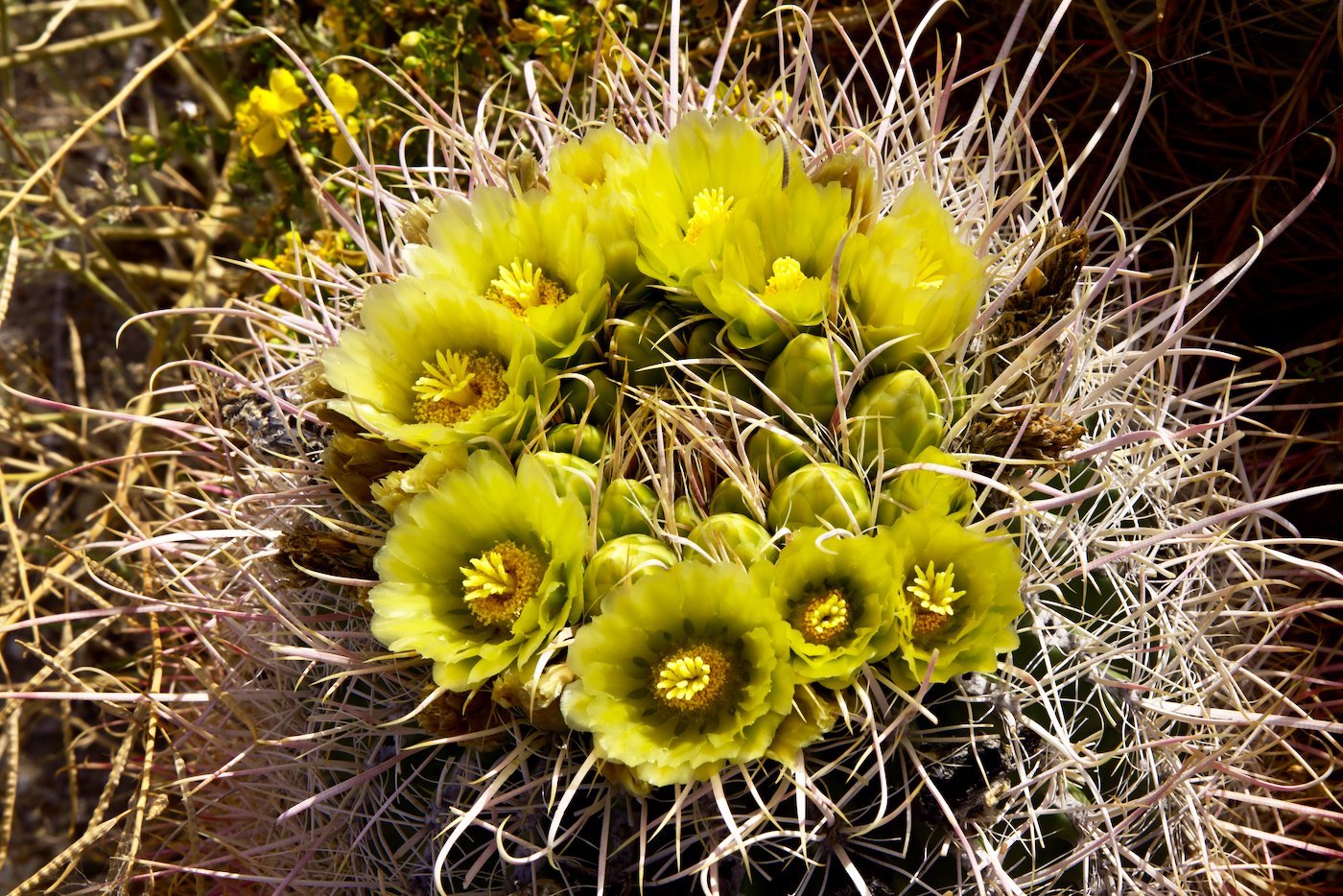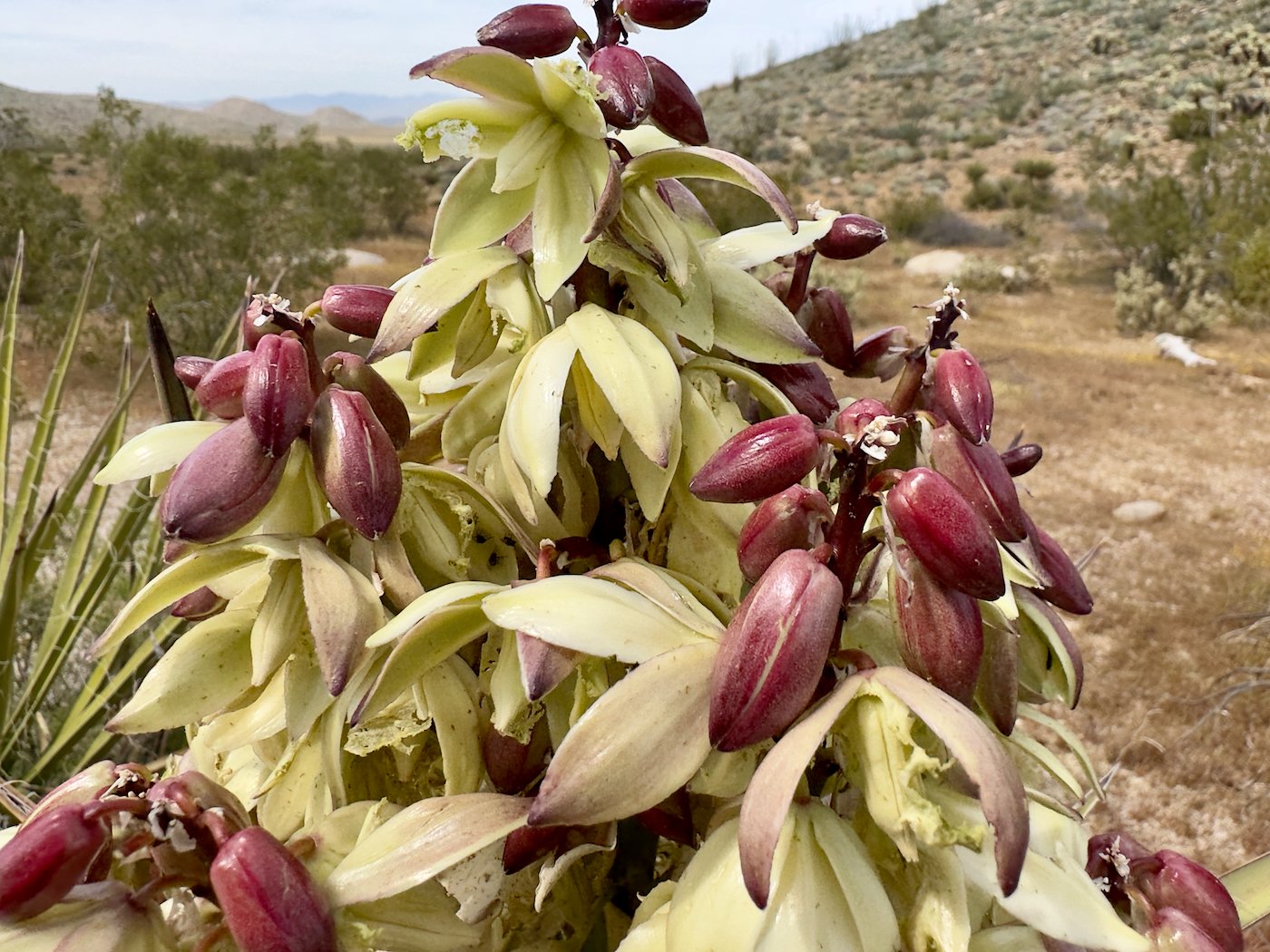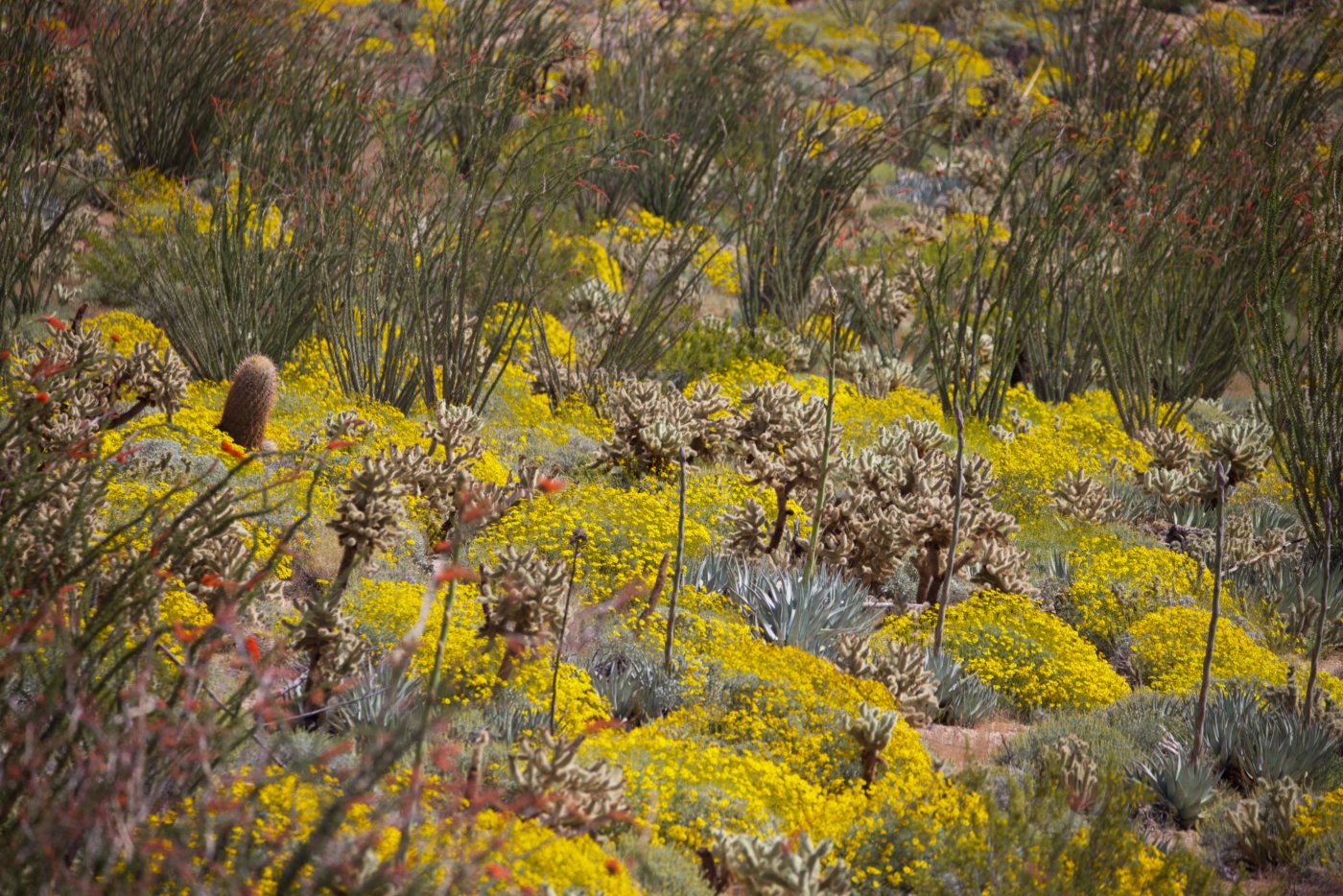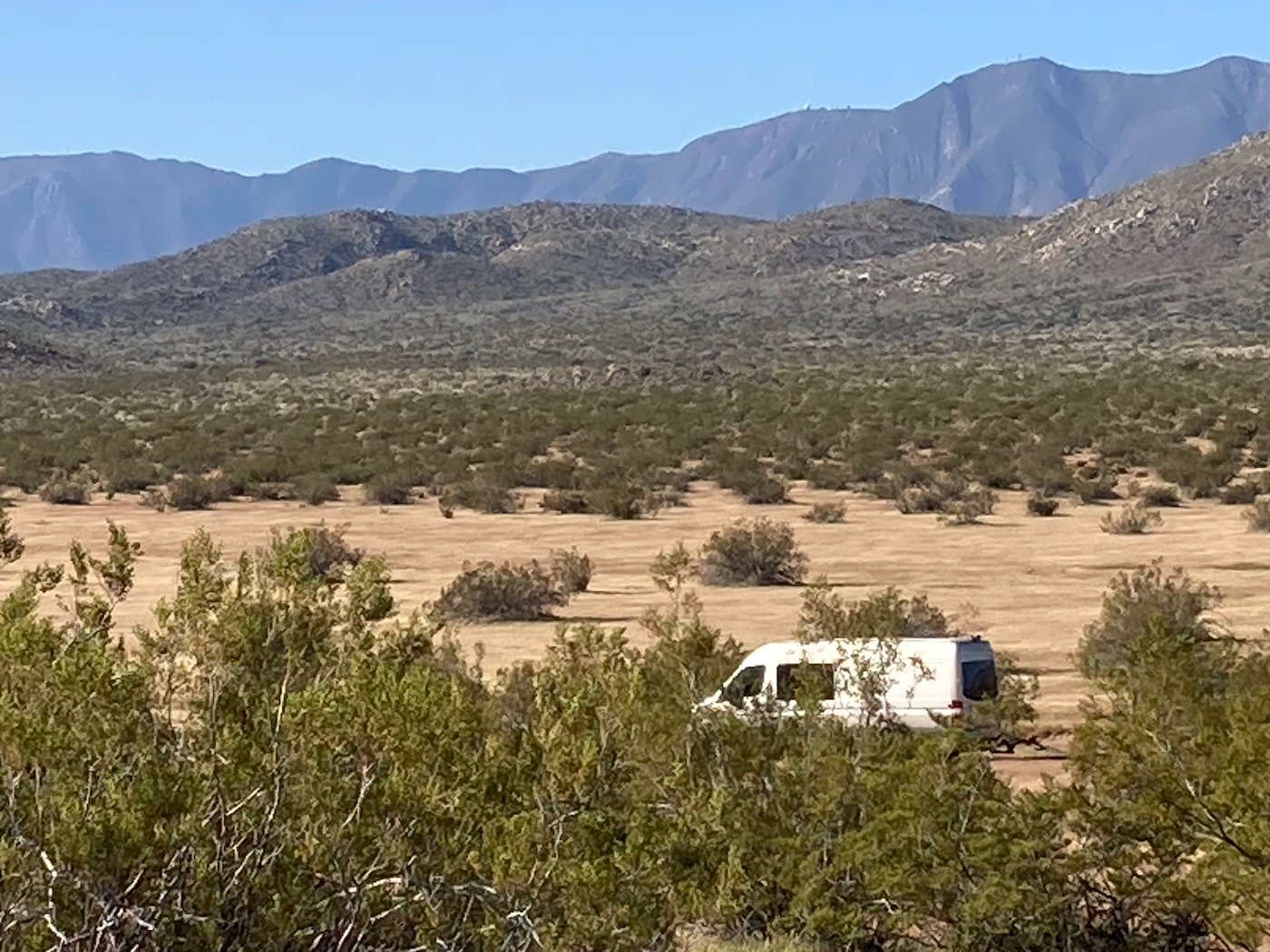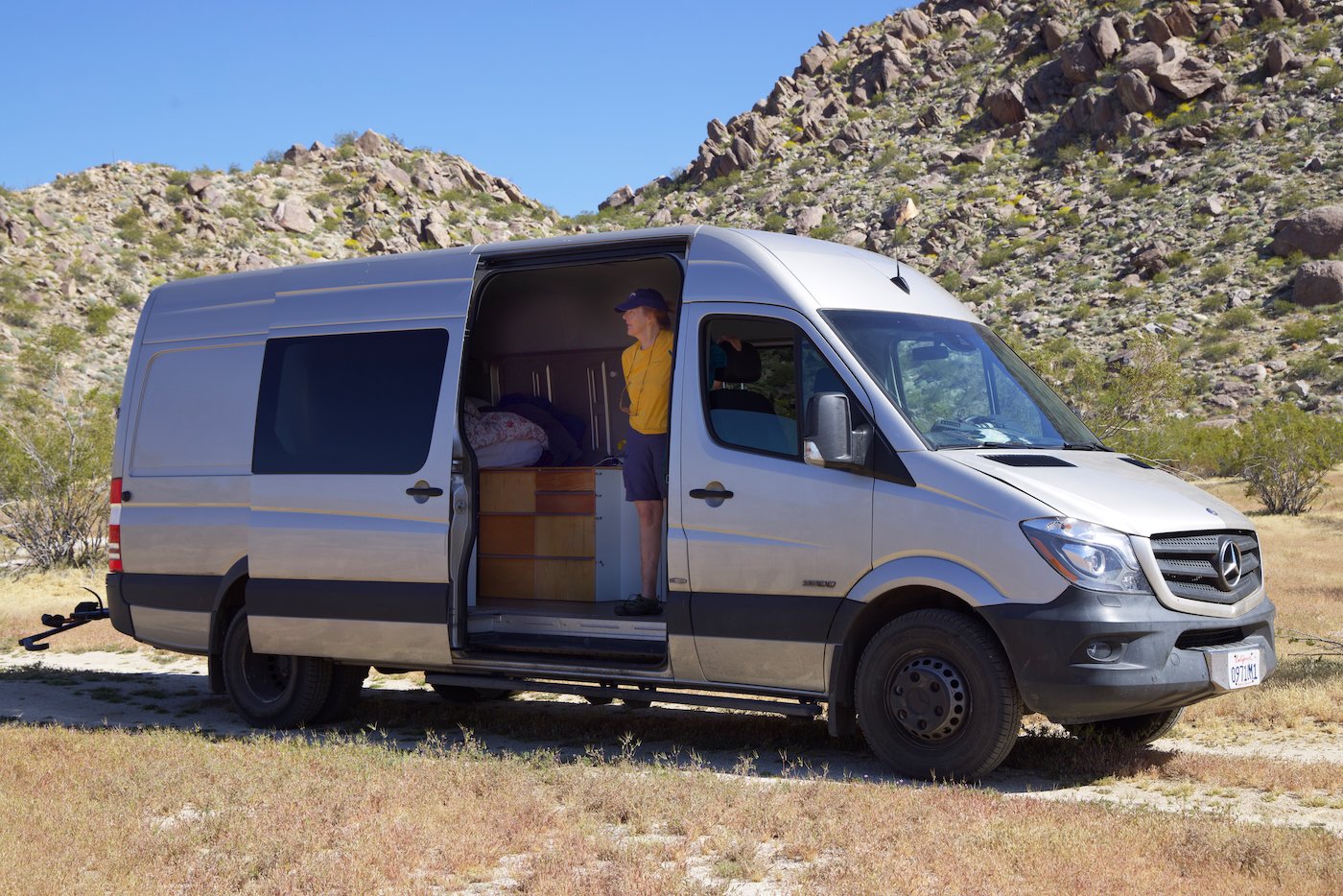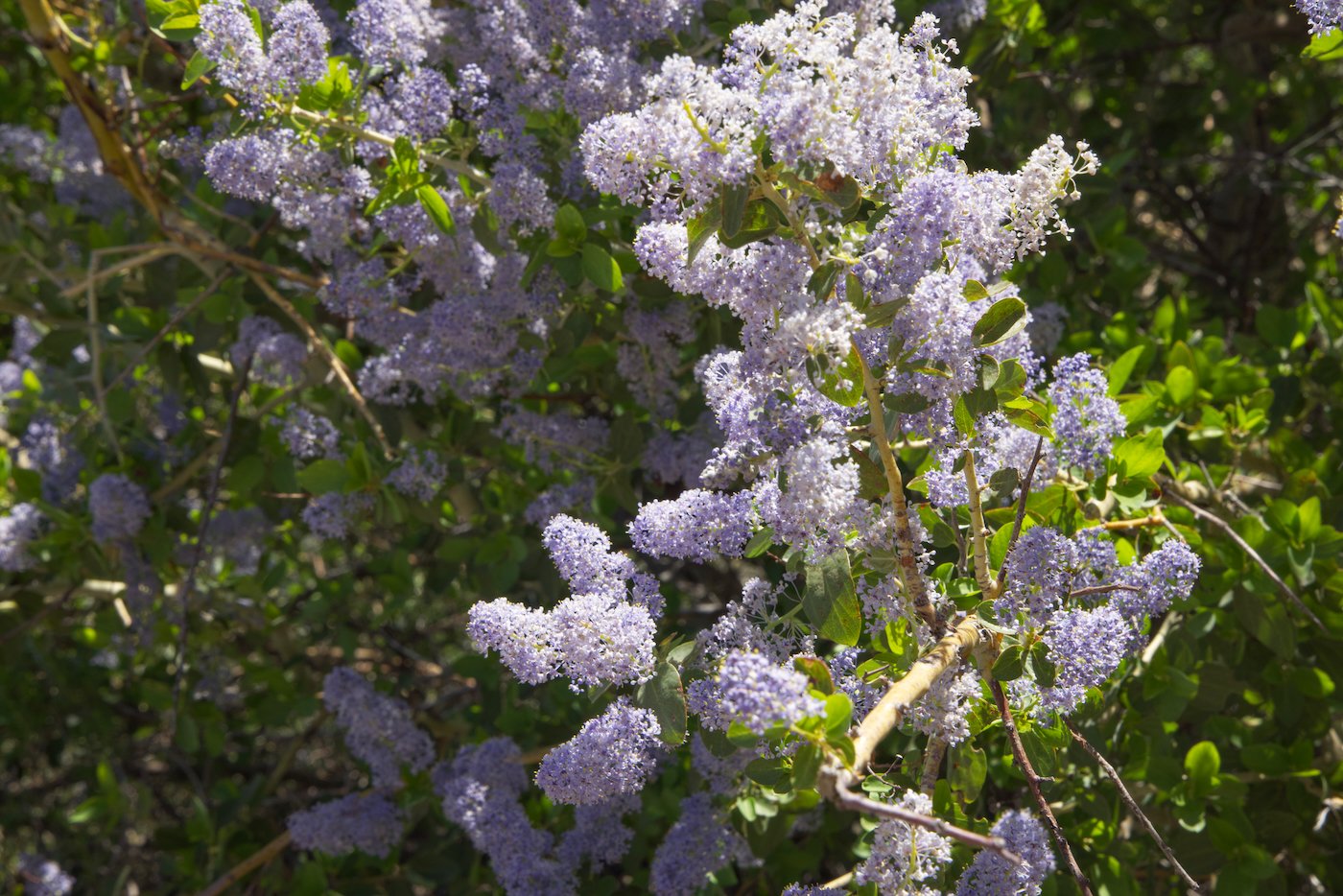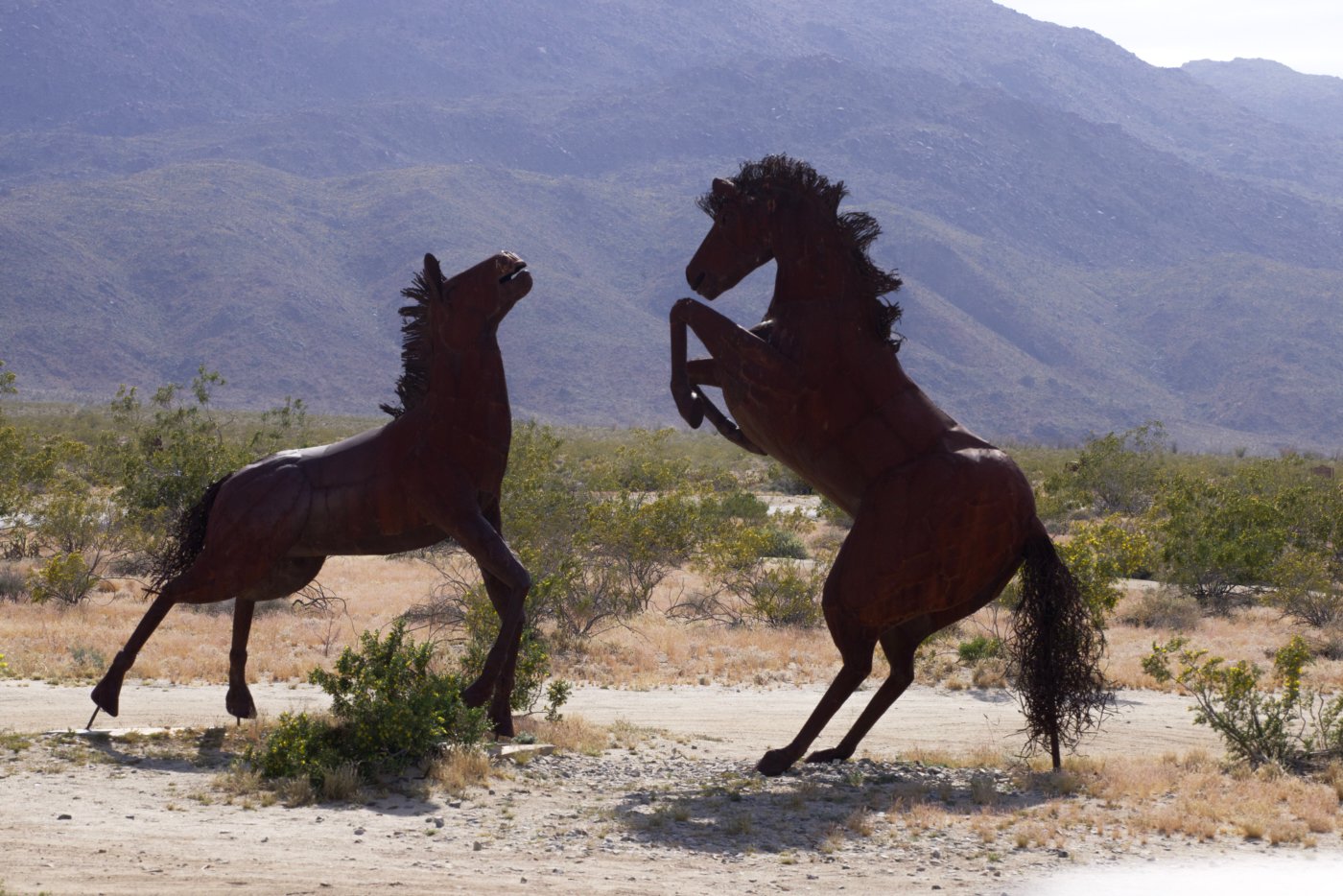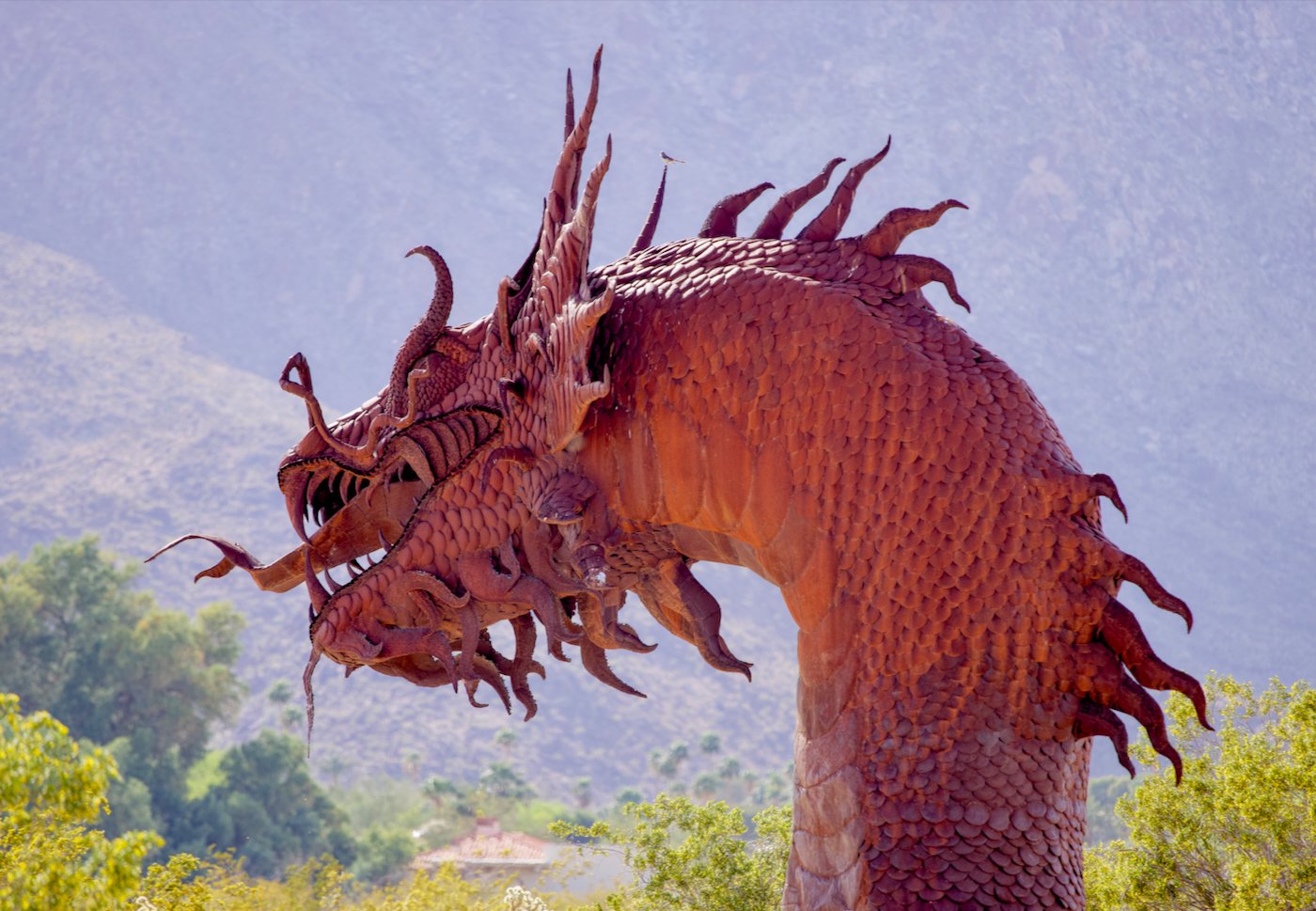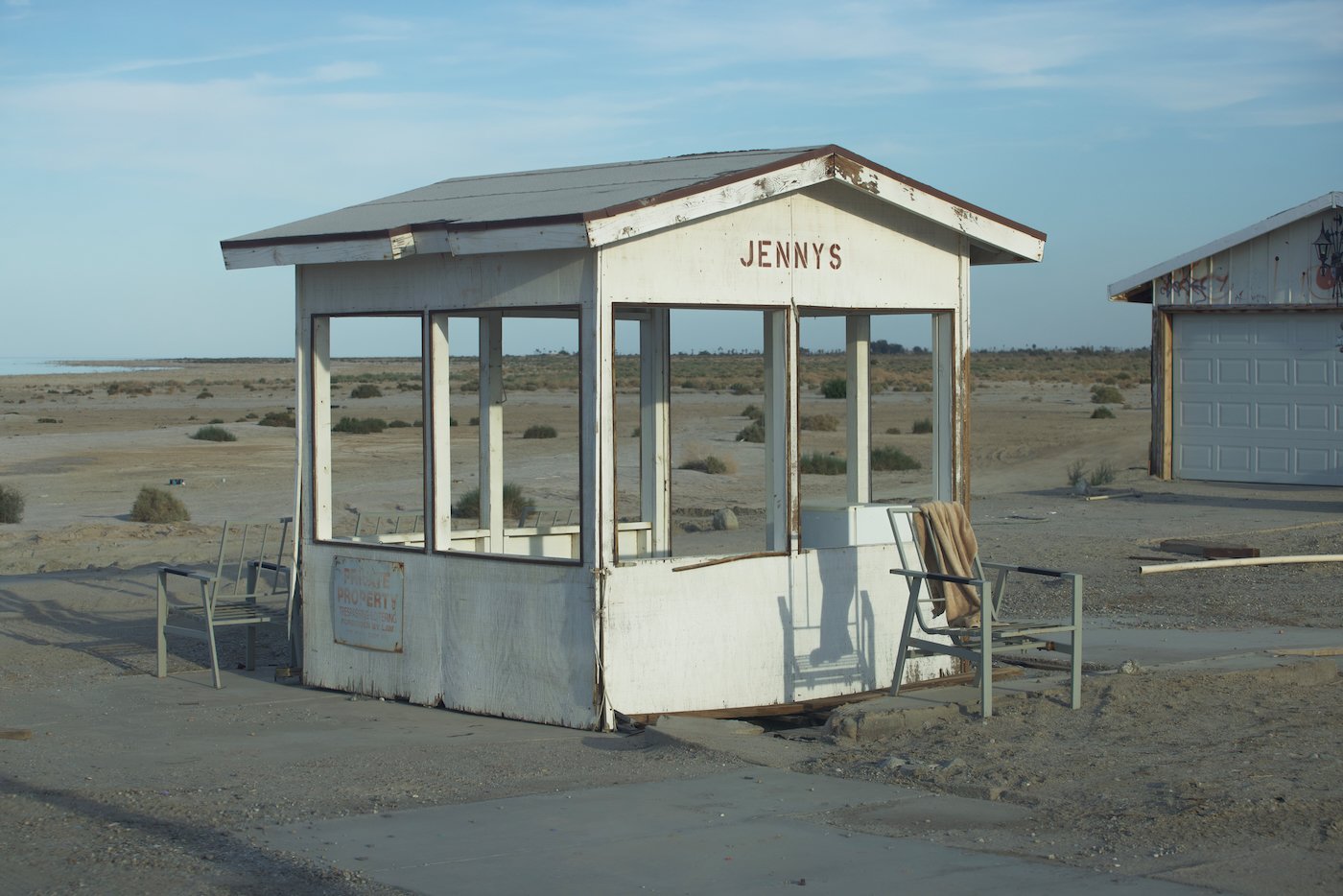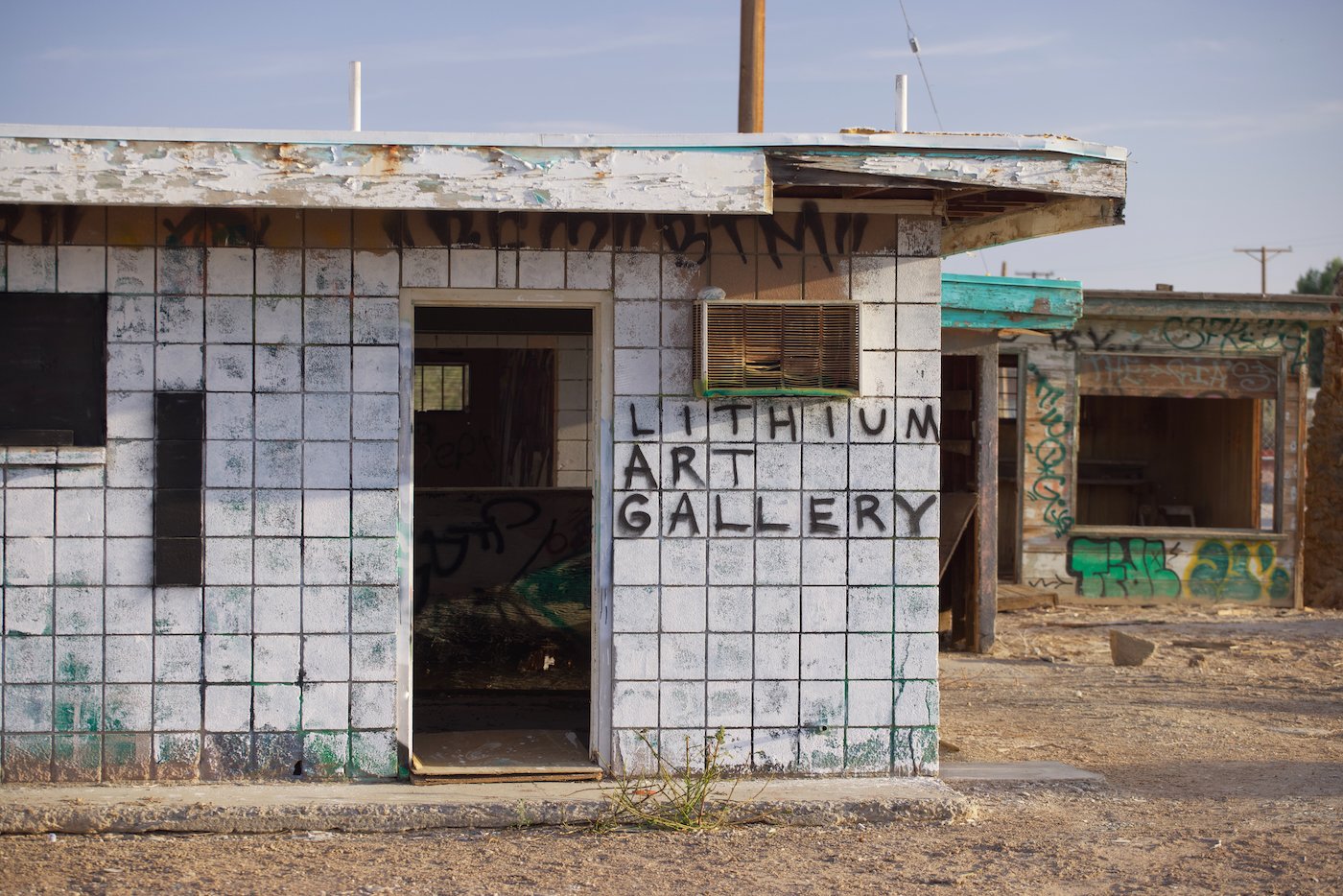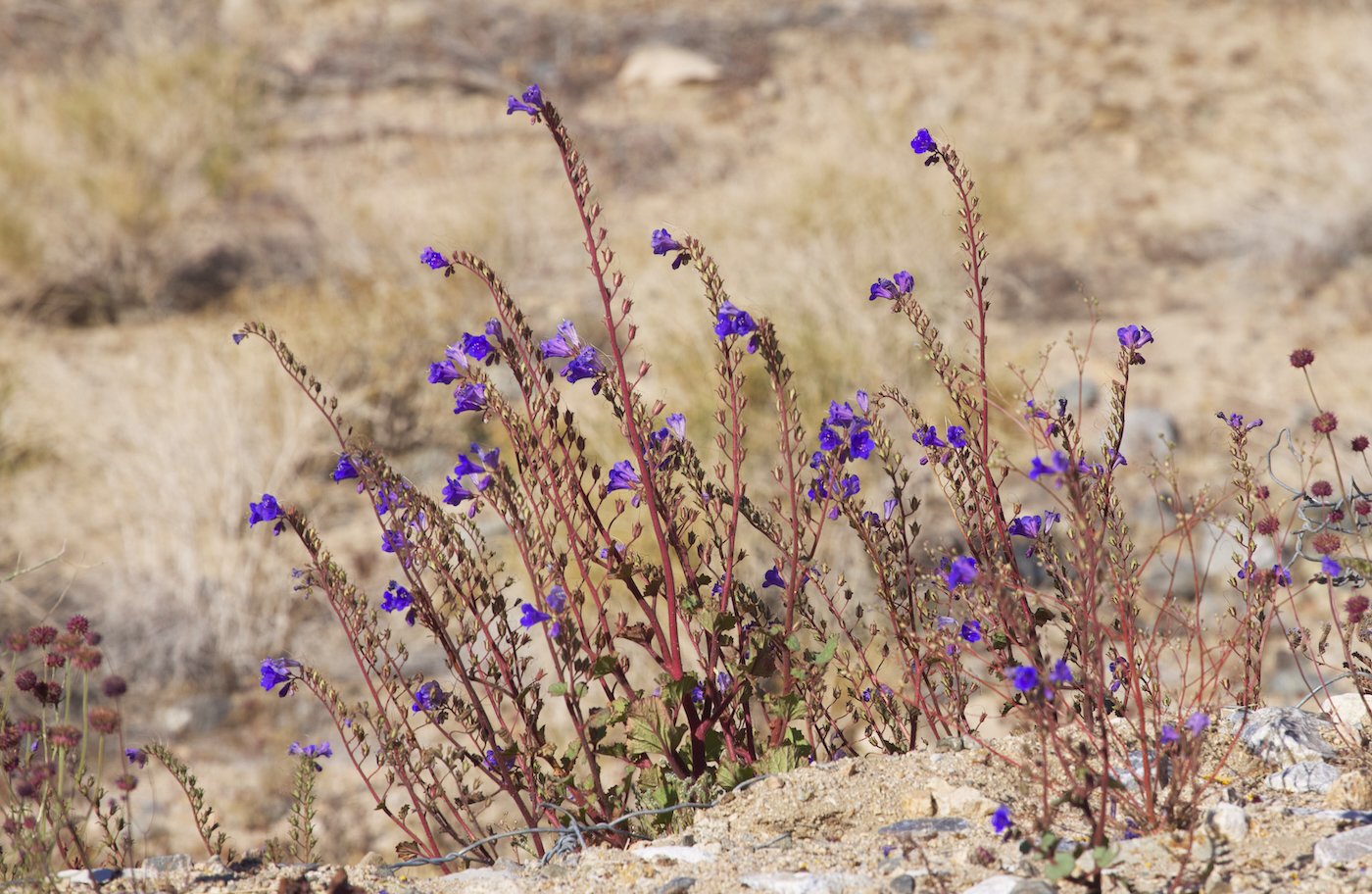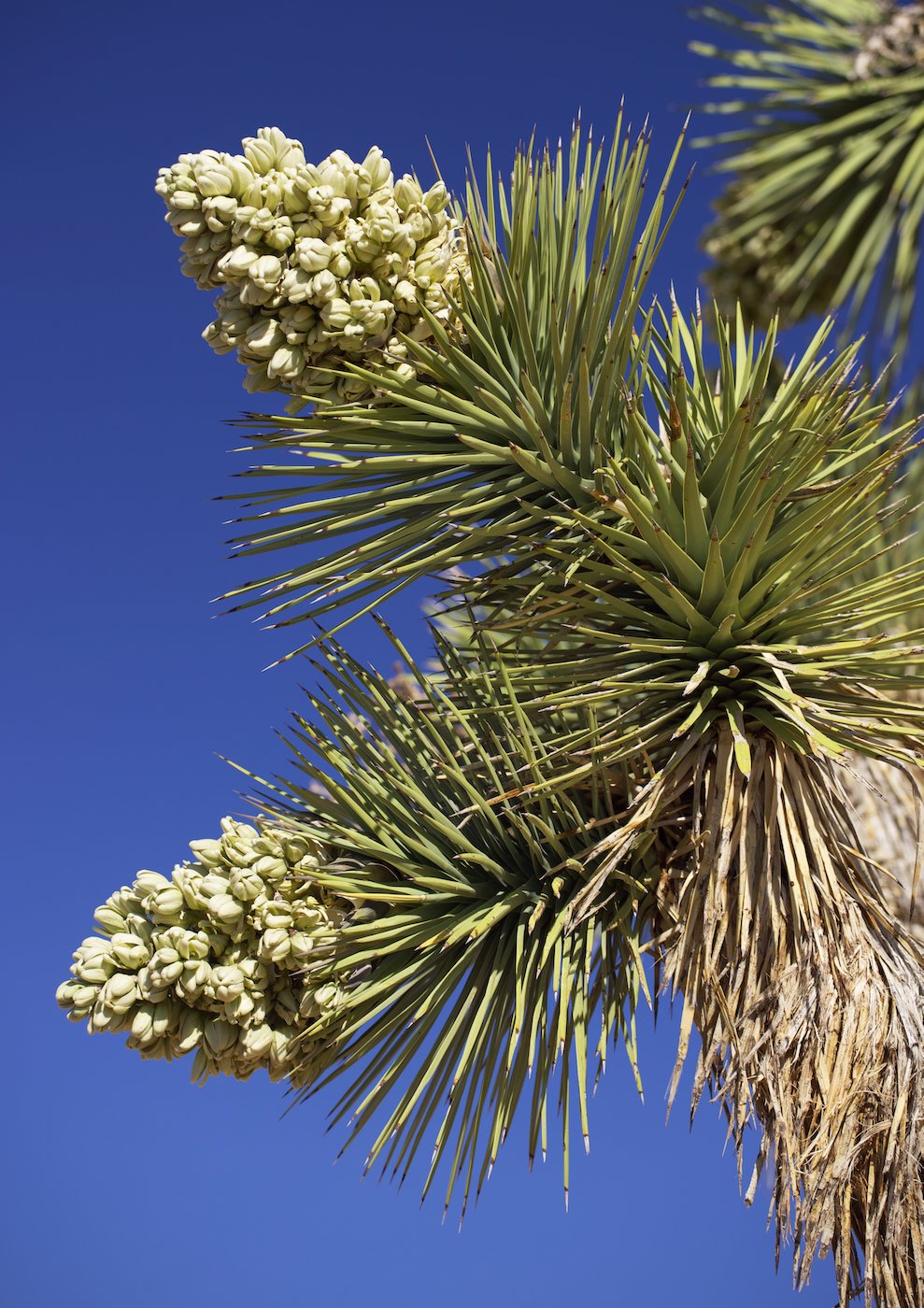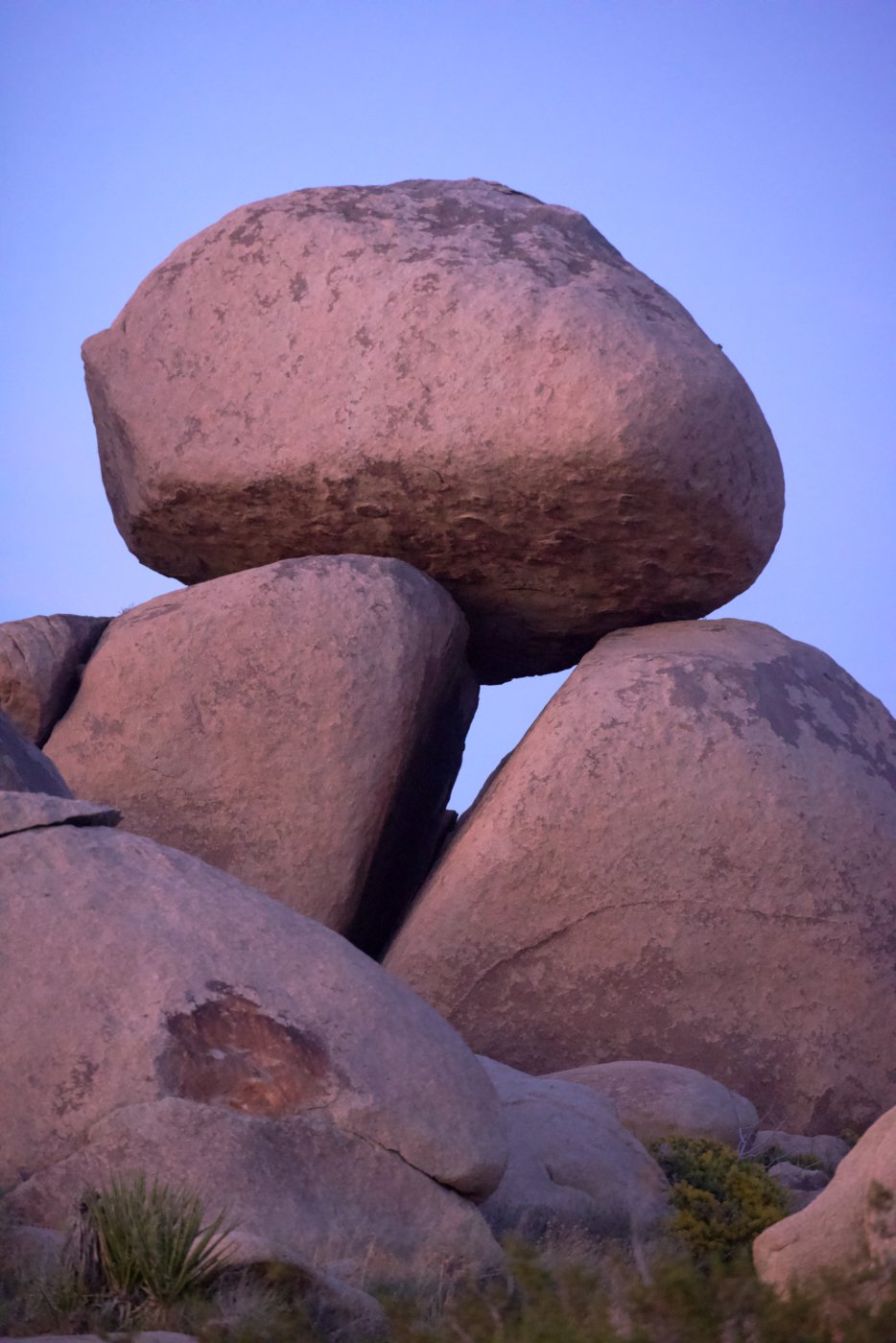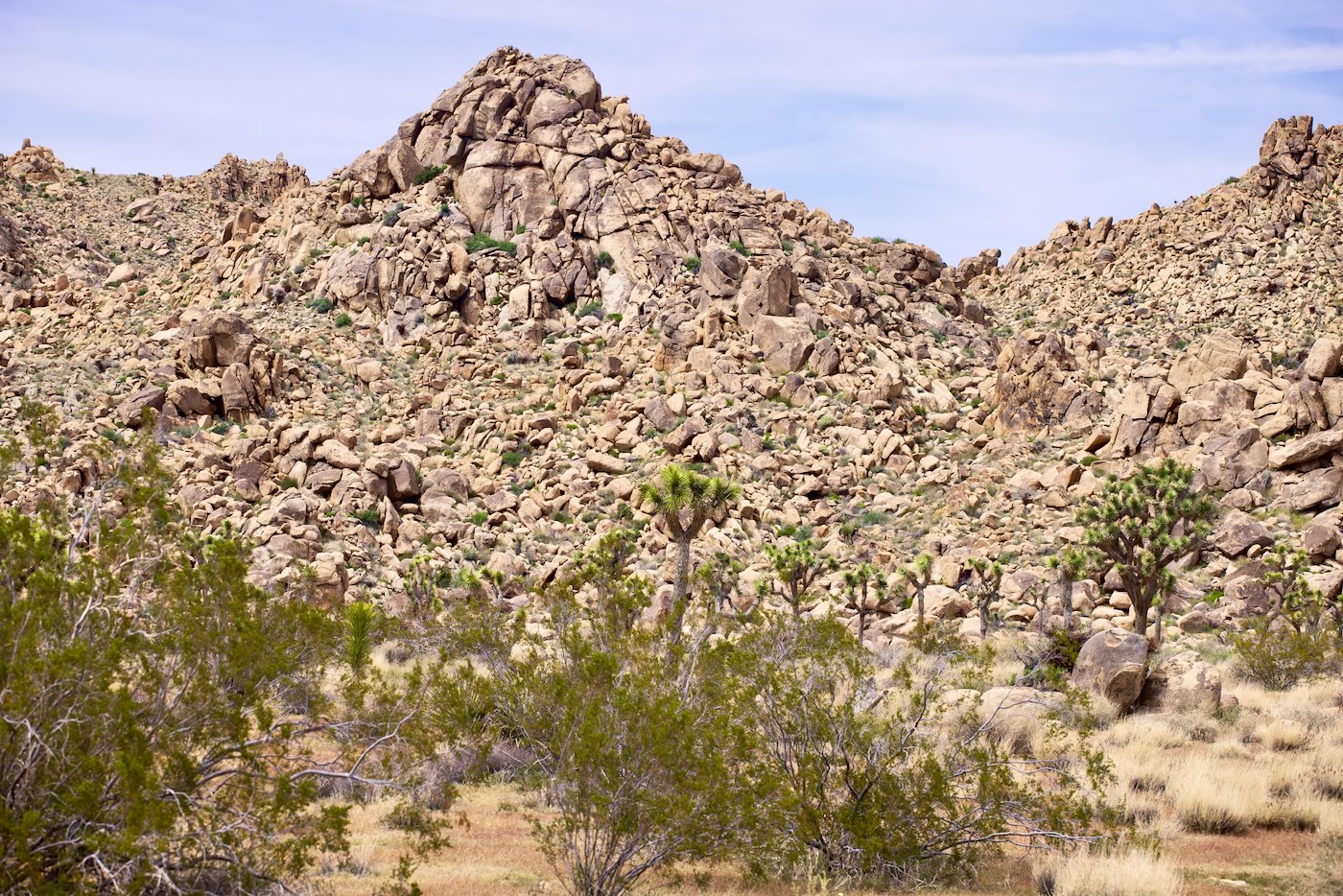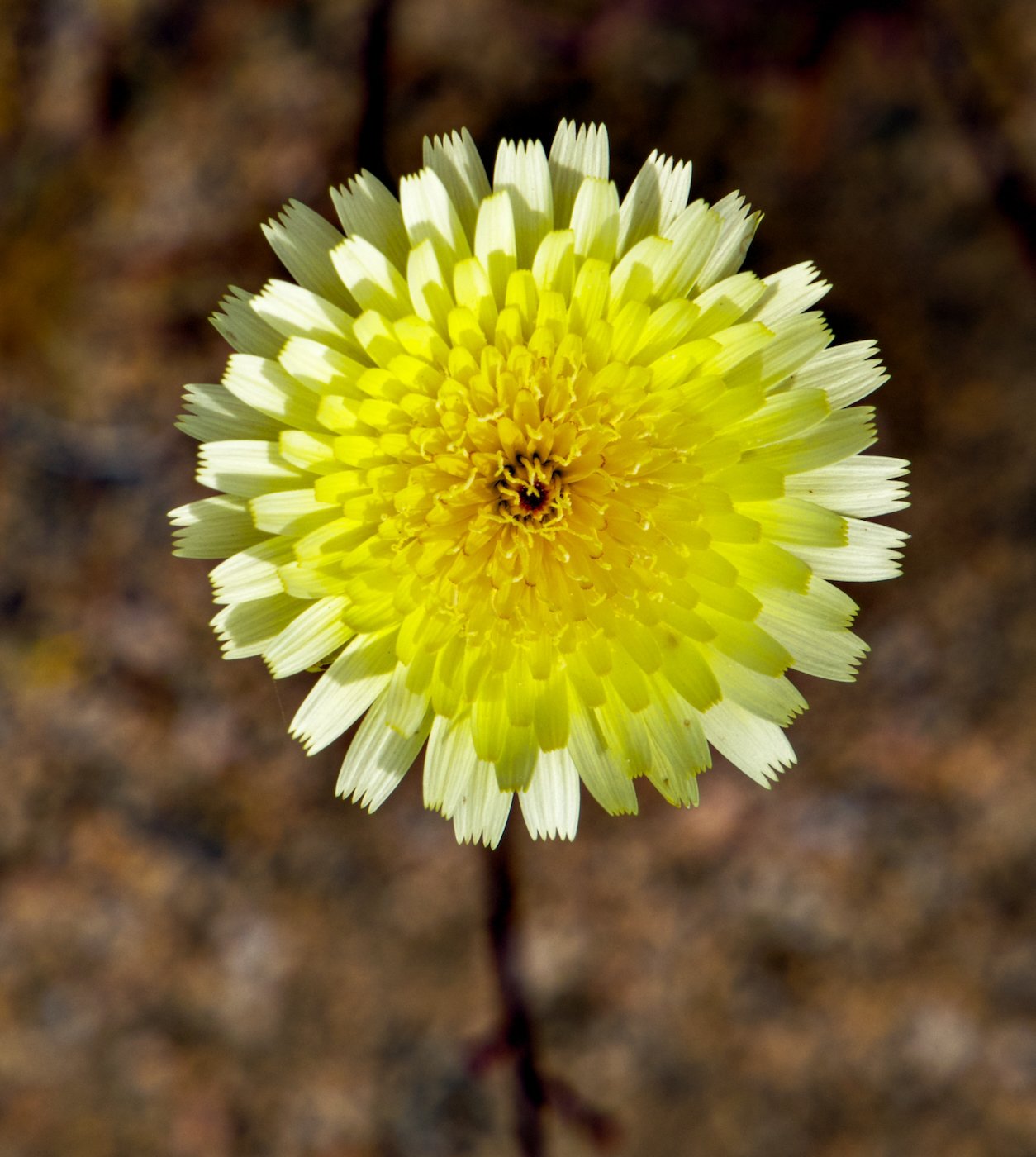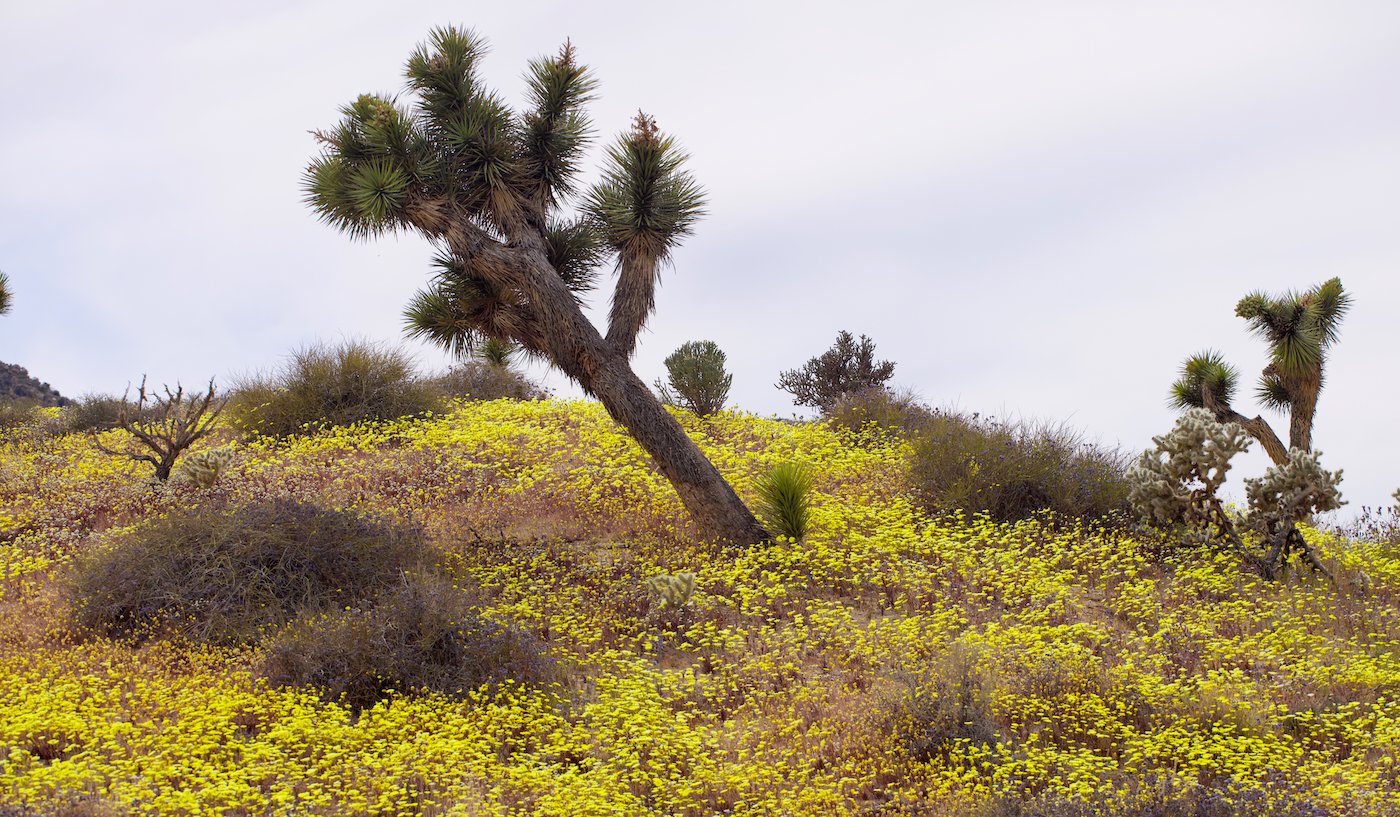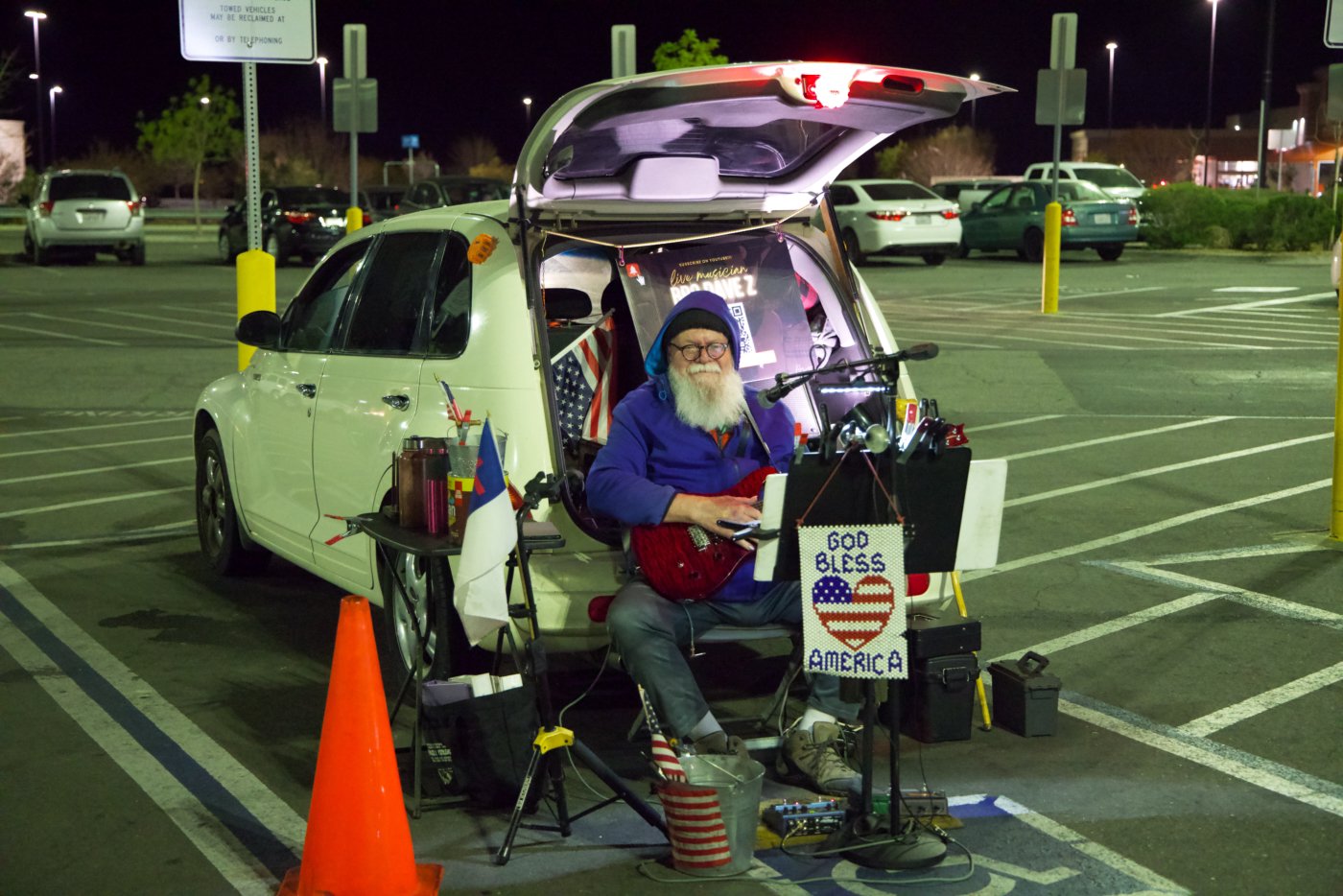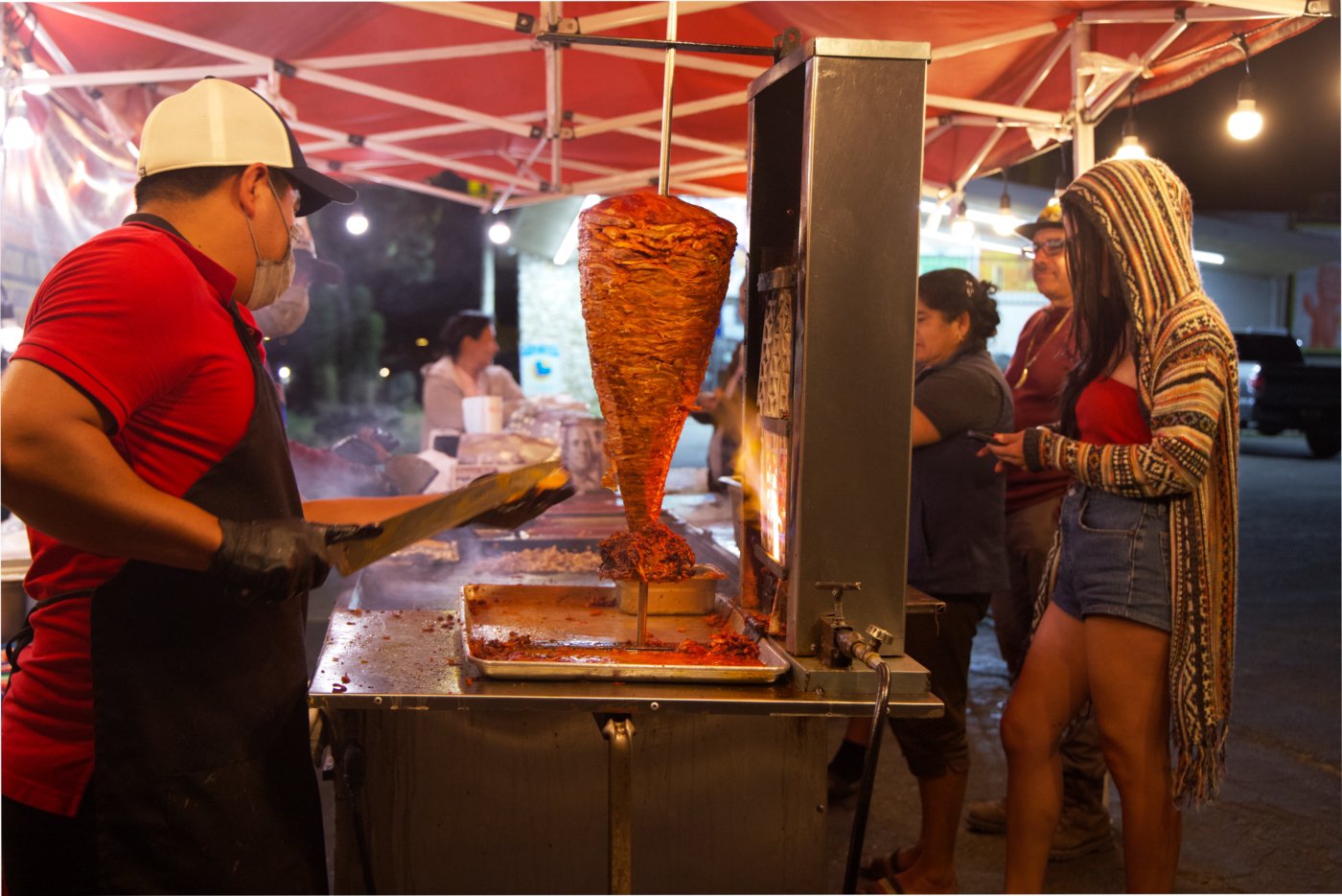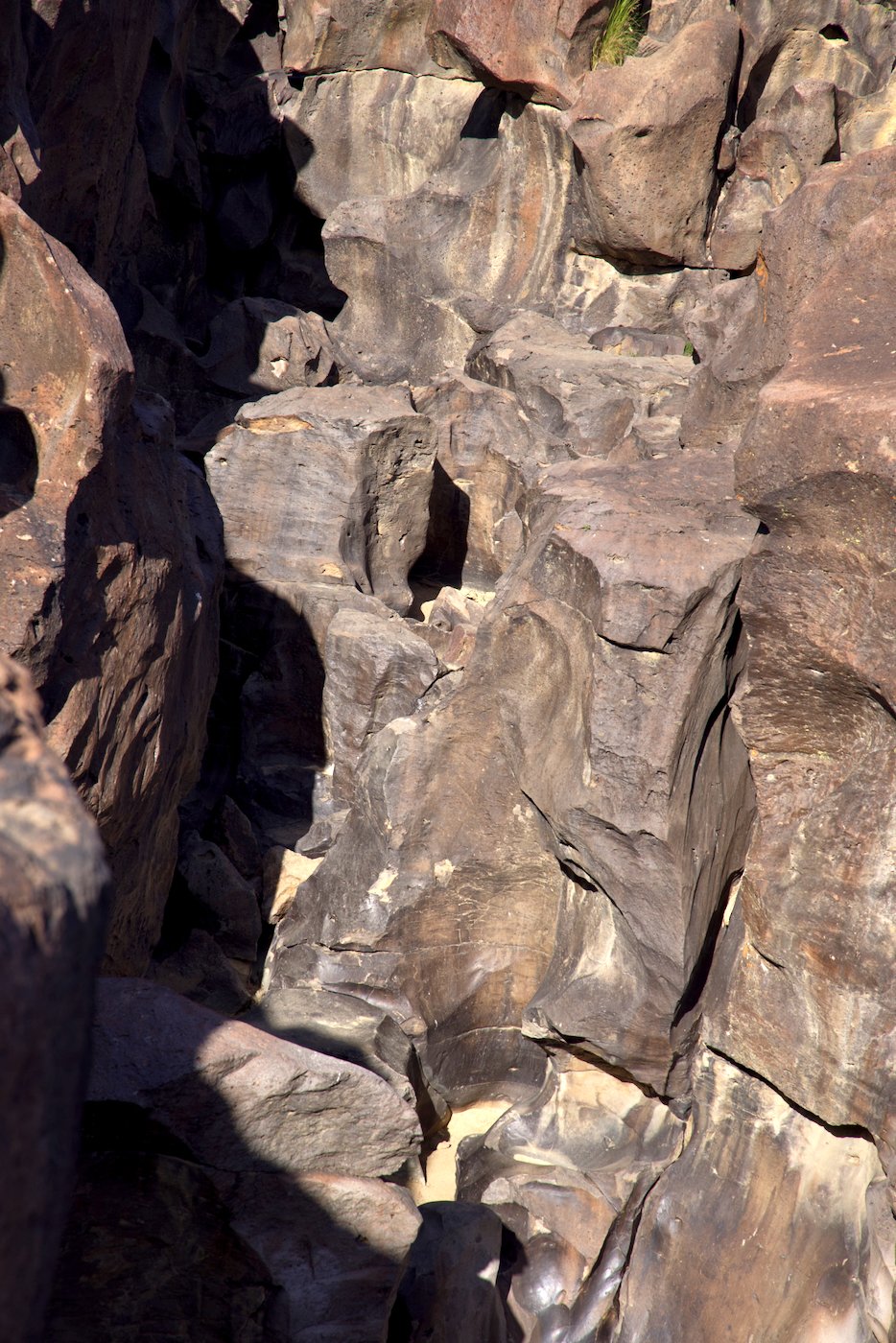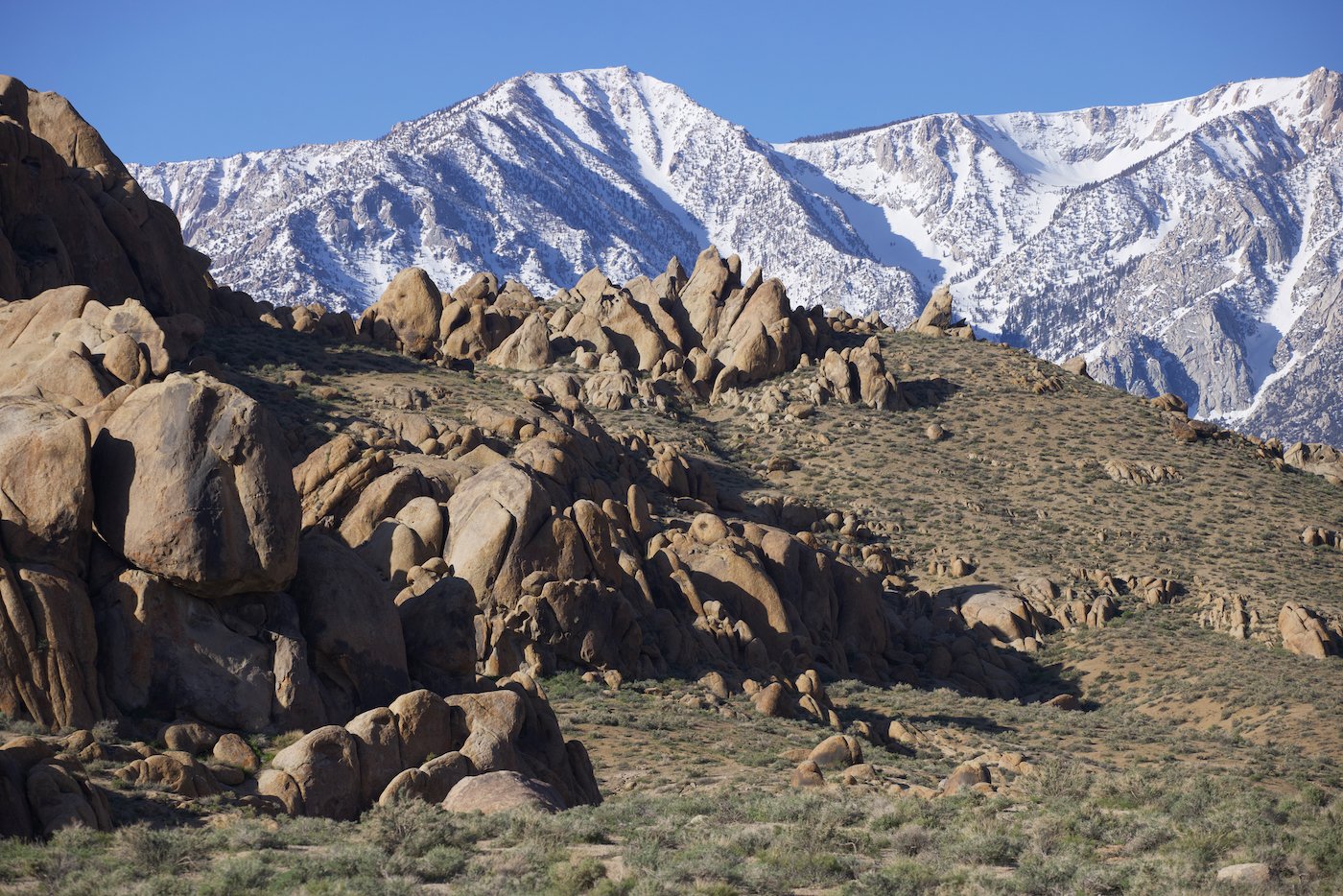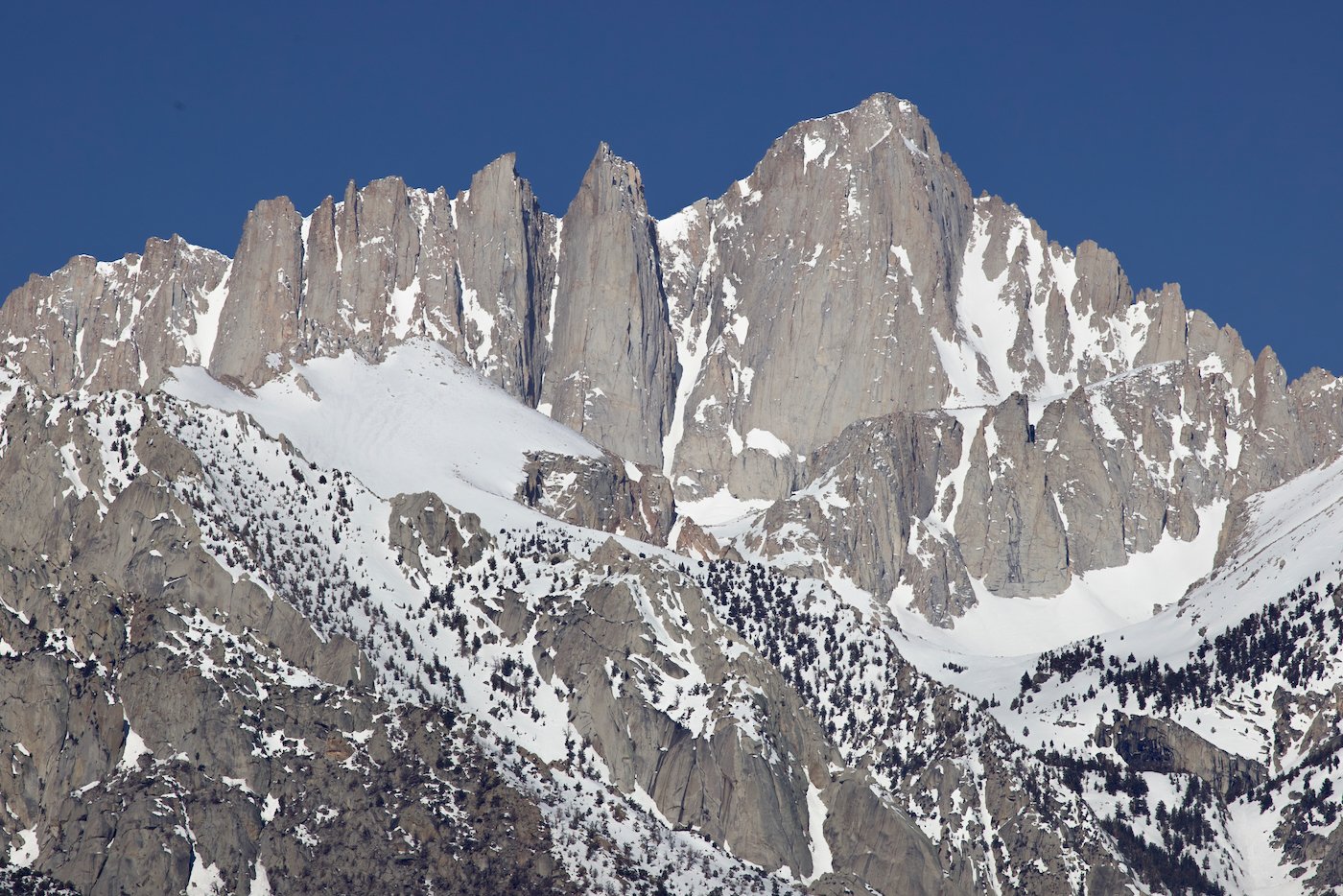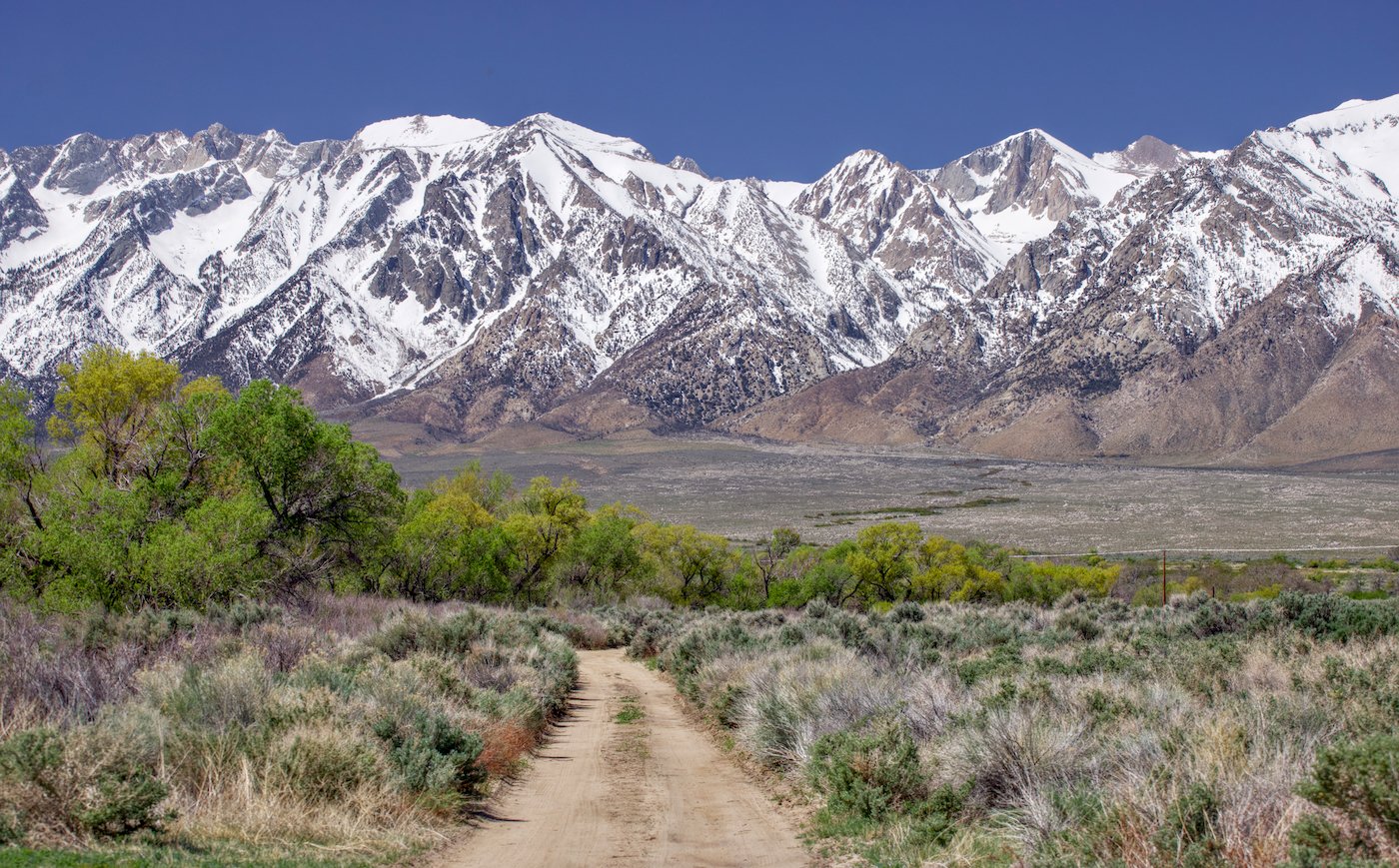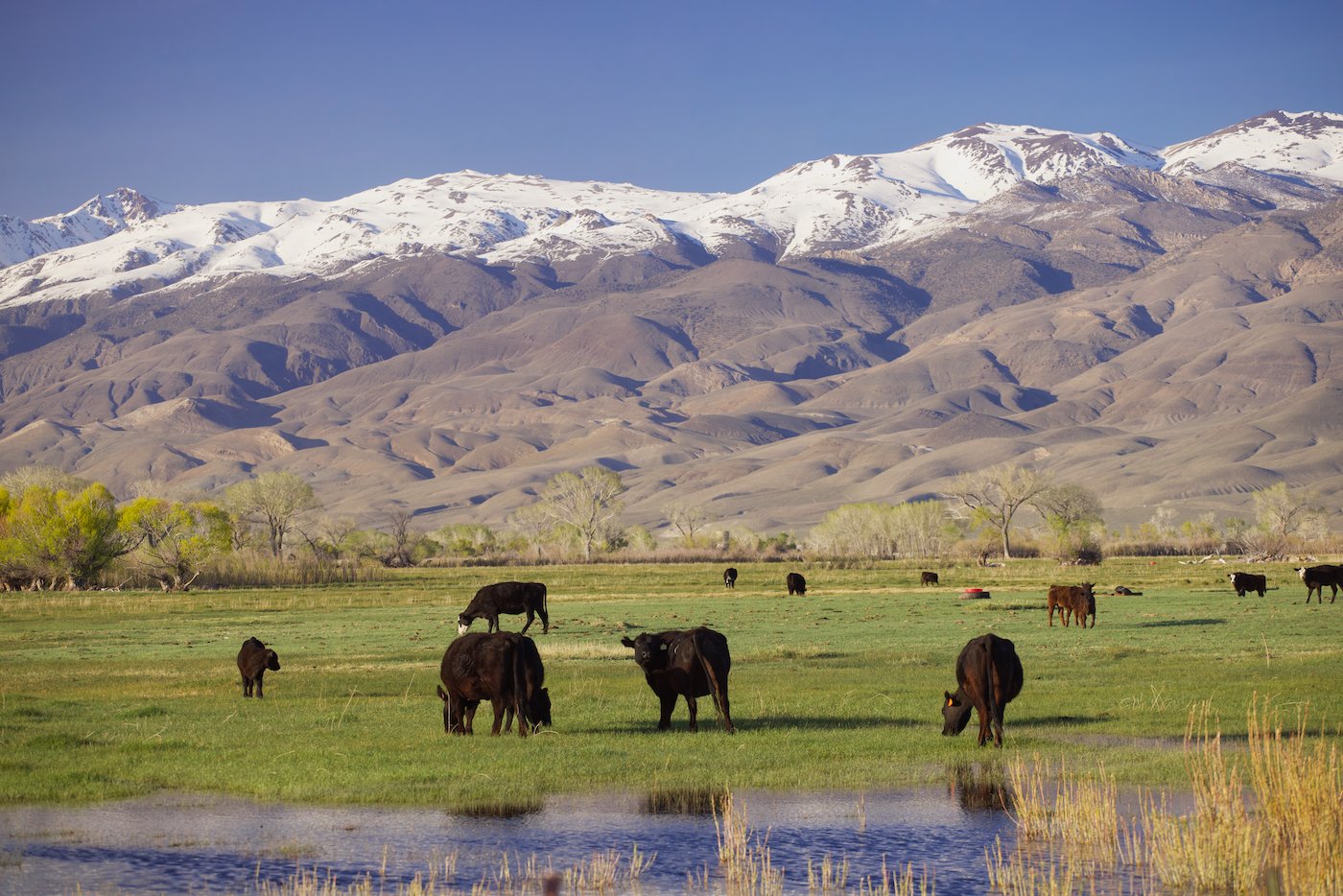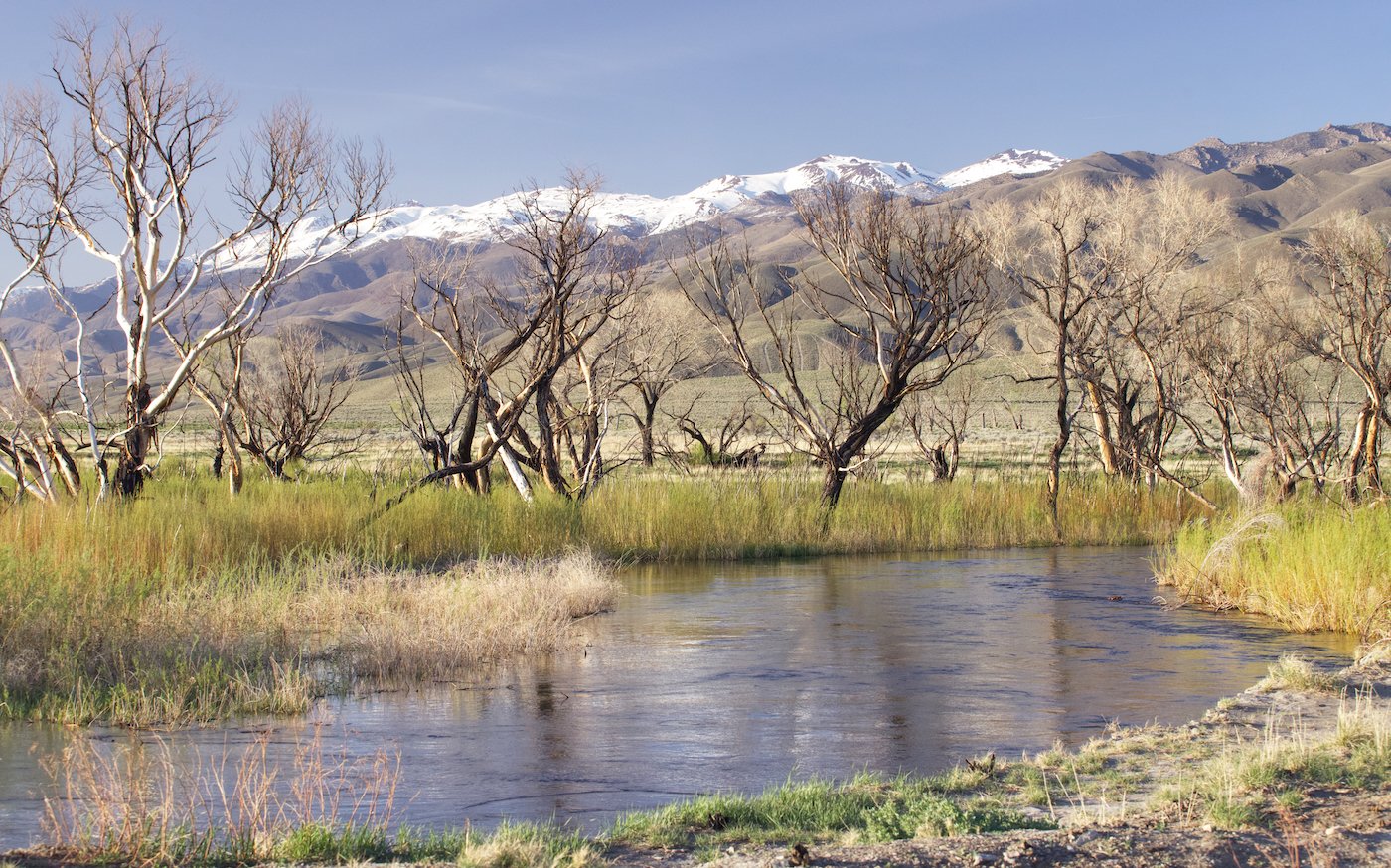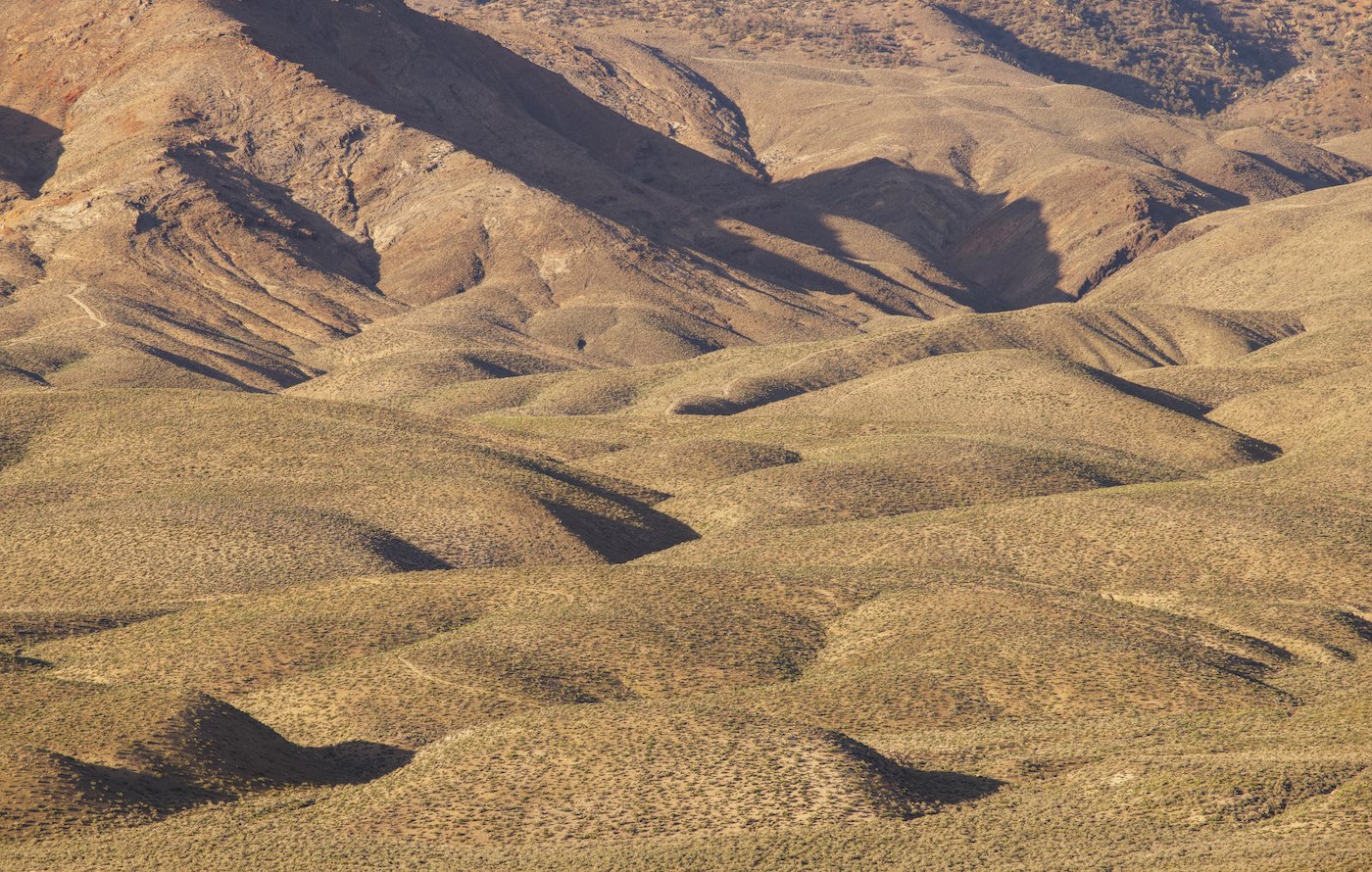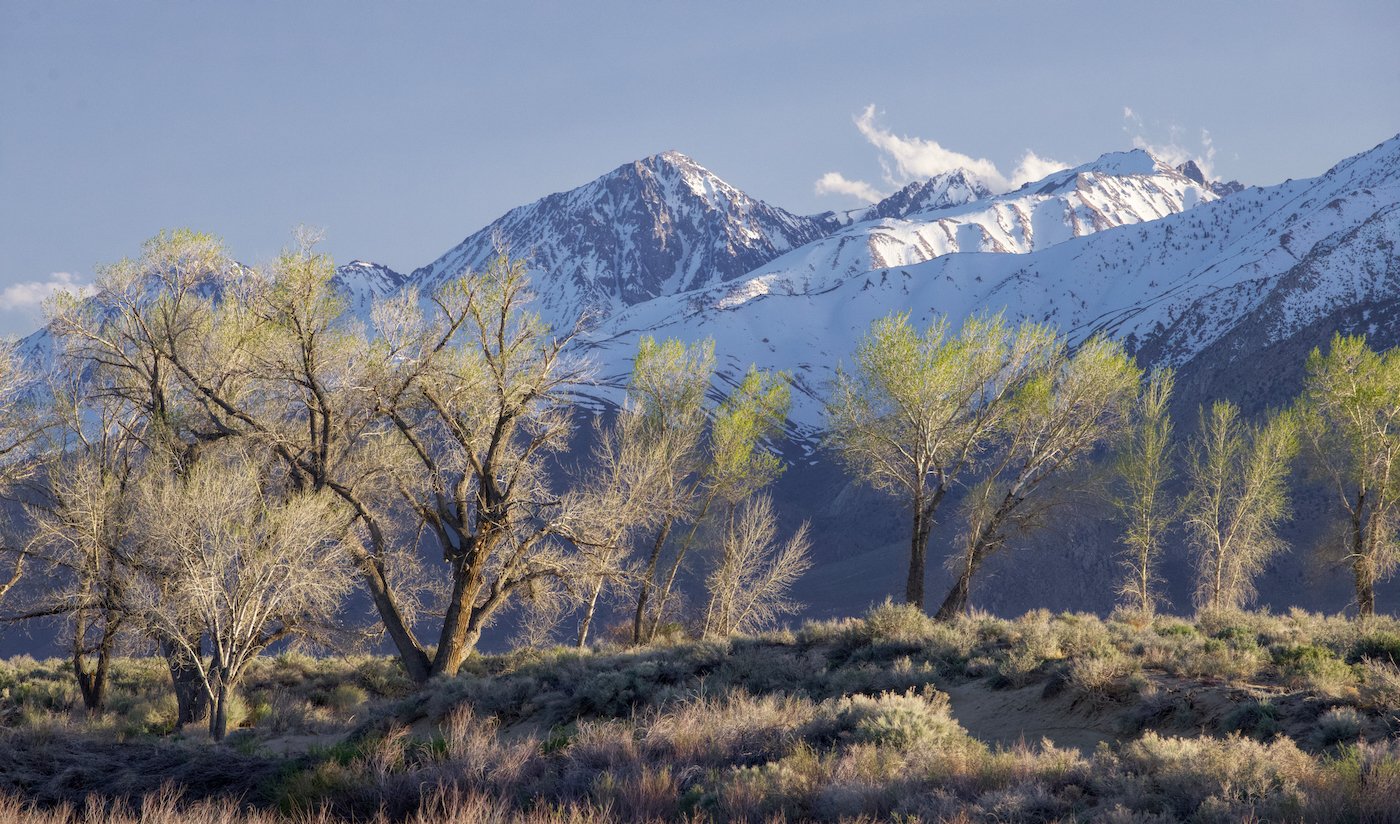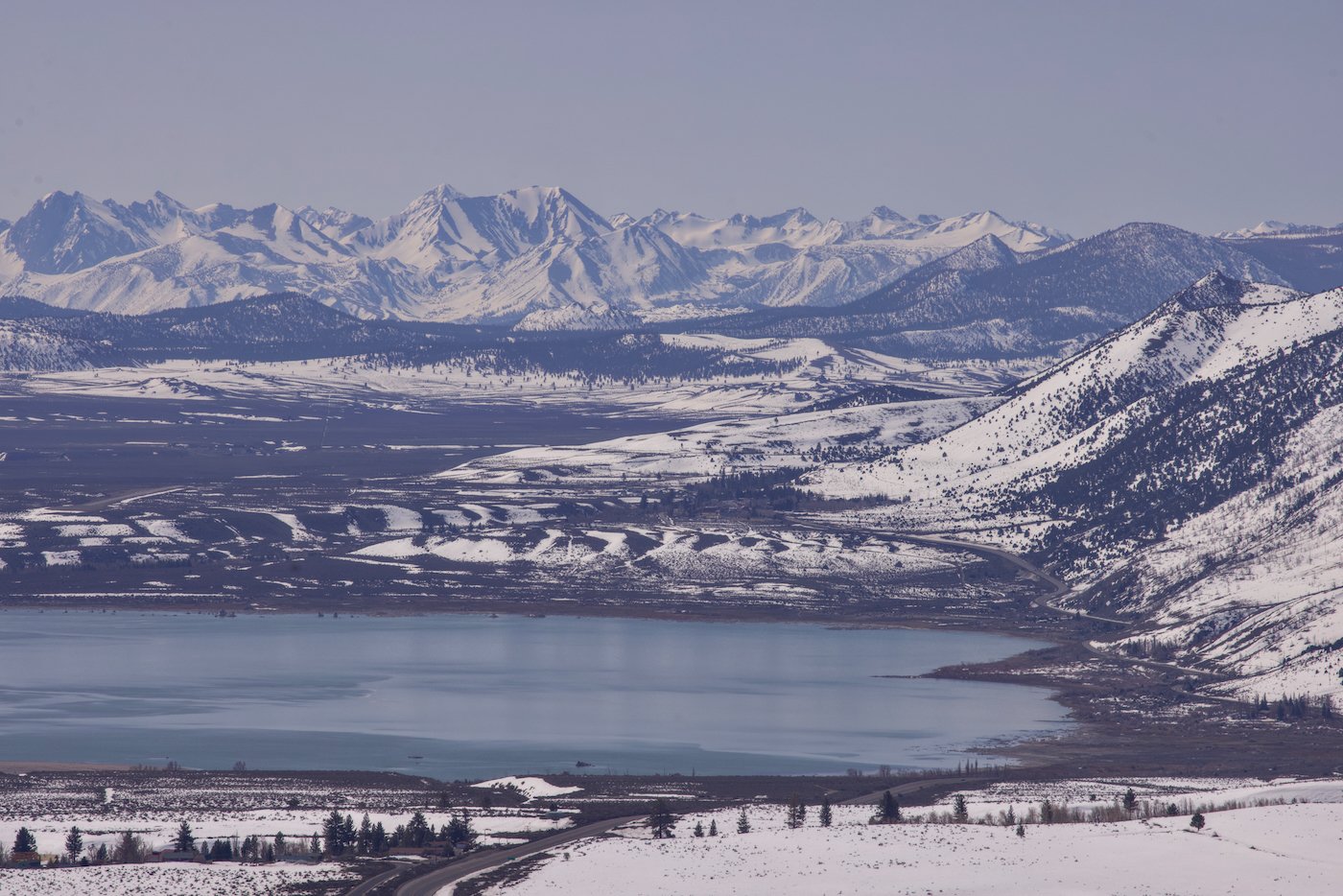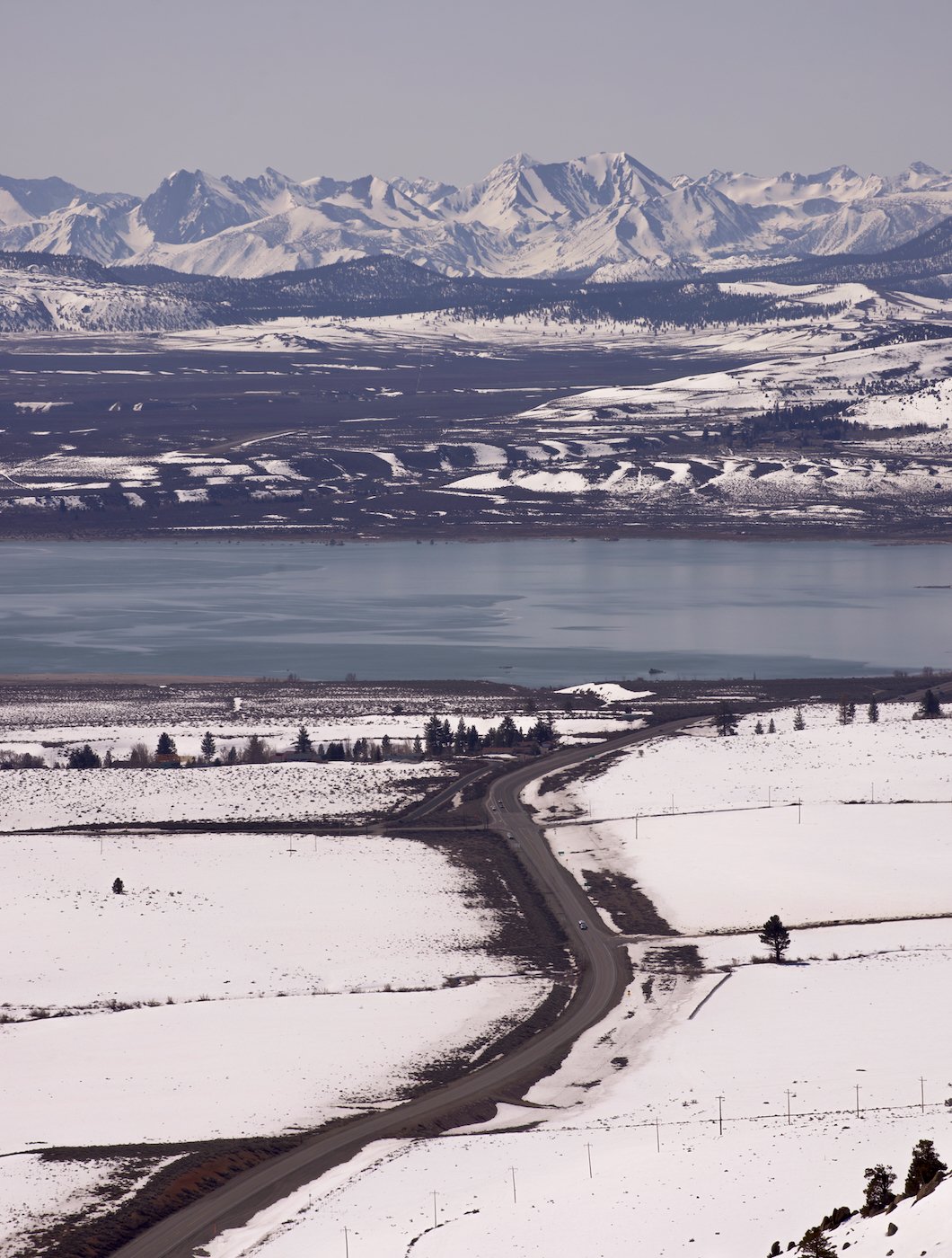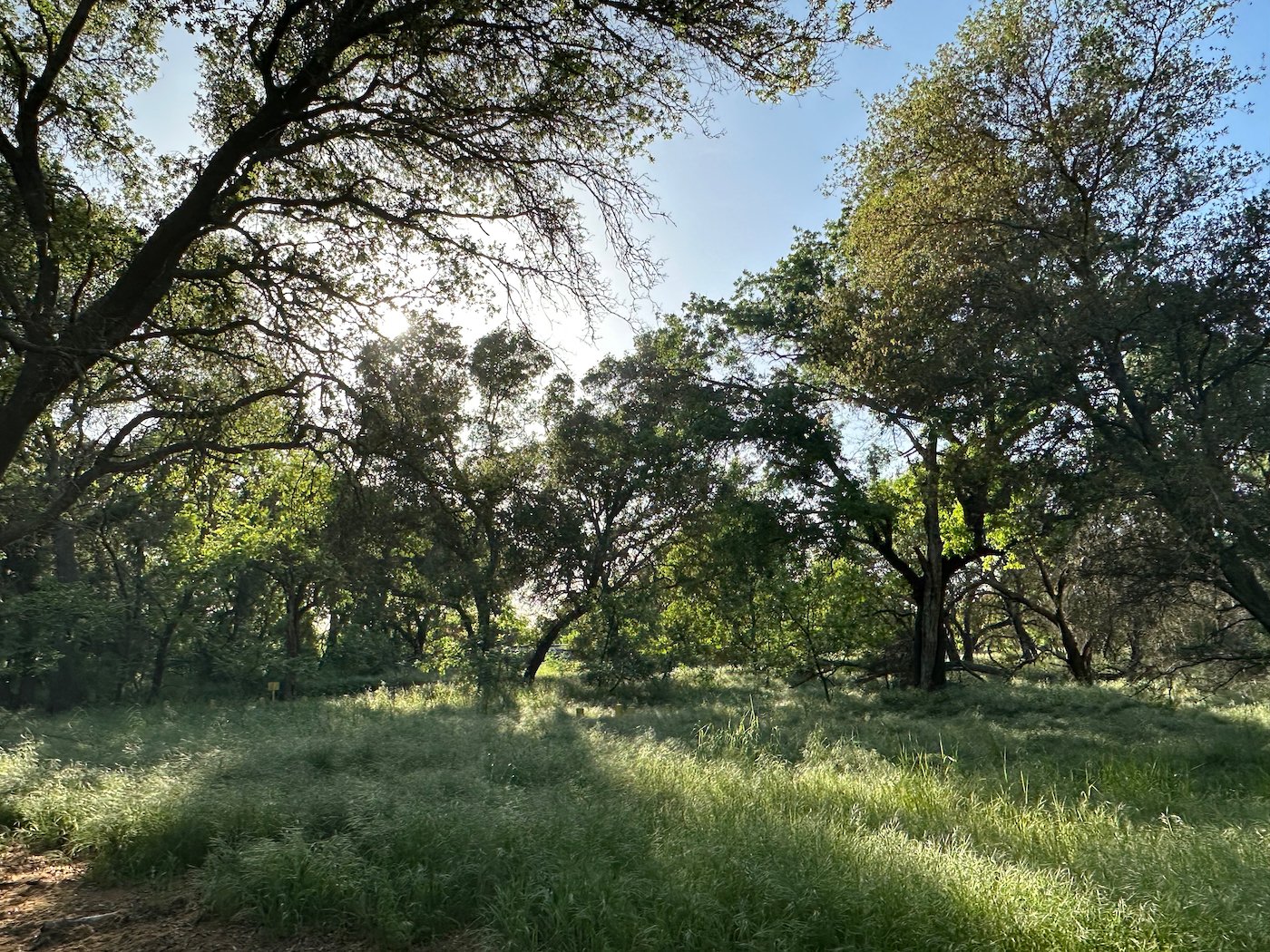With all the rain in California this year, we knew the desert would be stunning. We chose to go to the less-visited Anza Borrego State Park, just 30 miles north of the Mexican border.
By the time we packed the van, we had a late start and only made it to Paso Robles and its Walmart by midnight, remembering that it welcomed RVs to overnight park. One rather strange individual paced the parking lot all night but did not bother us. I generally despise Macdonald’s but I must say the egg mac-muffin and latte the next day went down very easily. The ATM nearby was convenient too. Is this camping?
And what a change from our wet cold winter. The temperature was perfect, with no wind and flowers all over. We made our way to Agua Caliente, a geothermal heated springs in the Anza Borrego Desert State Park. It has a large warm indoor pool and two cooler outside pools. It is run by the San Diego County and costs $3 a day. We soaked there twice.
Anza Borrego is a state park where you can enjoy dispersed camping. One must leave no trace by packing in and packing out. We stumbled on to Blair Valley and camped there for two nights. It is just 16 miles away from the hot spring. We have not yet discovered why it is called Blair Valley. It is a dry lake, but this year it was covered with grass from all the rain.
At the end of the valley is the Little Blair Valley Cultural Preserve and the Ehmuu-Morteros Trail, made by the Kumeyaay tribe who lived there. We found grinding holes in the rocks of the former village, called morteros (Spanish for mortar). The Kumeyaay would grind seeds from Yucca, Juniper, Cholla, Creosote, Ephedra and various other cacti and plants. Over the years they pounded mortar holes in the granite rocks as deep as 12 inches, others were much shallower depending on their use. Some of the large rocks which still line the trail, served as shelter, food storage or sweat houses. The dark soil and scattering of rocks nearby could be the remains of an Agave roasting pit. These were made by digging a deep pit and lining it with rocks and a layer of hot coals. Agave heads, stalks and leaves were placed on the hot bed of charcoal and covered with sand. Three days later the Agave would be ready to eat.
Further up the trail is a red and black pictograph. Black paint was often made by grinding up charcoal and adding oil from roasted Wild Cucumber seeds while the red paint came from iron oxide. Paintbrushes were made from Yucca and Agave fibers.
We drove a few miles south of Agua Caliente and came across the US border patrol looking to ambush migrants. They did not search the van and waved us through the roadblock.
We made our way slowly through Anza Borrego Just outside Borrego Springs, we saw the work of sculptor Ricardo Breceda which is spread over 1500 acres of undeveloped desert land. The metal sculptures are large, the dragon spanning over 300 feet, parts of it being underground. The horses are larger than life size. It certainly warranted the side trip to see them.
From there another surreal scene awaited us. Being weary and needing more supplies, we decided to sleep at the Walmart Supercenter in La Quinta. It had a surprisingly good array of fresh fruit and produce, some even organic. We were entertained by a veteran musician who was set up from the back of his car - not using it as his home, but rather as a stage. After playing for tips for a couple of hours, he left.
The next night we set up in a wash outside Joshua Tree National Park and made our way to the park in the morning. This park was very different from Anza Borrego - many more people and fast drivers. Unfortunately, many people do not know that you actually see more if you drive slowly; you also will not injure the local wildlife.
Perhaps we were too early but the flowers were not as spectacular as those in Anza Borrego. The weather was changing and the air was not as clear as before. After exploring the park for a couple of days, we decided to head north via Highway 395. Our next stop of significance was Fossil Falls. Originally an actual waterfall fed by the Owens River, it is now sucked dry by Los Angeles. You can see where pools were carved out by thousands of years of water running through. We made our way to Lone Pine, near Mount Whitney. We were happy we had a heater in the van as we were definitely back in winter. The Sierra was covered with snow and Mount Whitney was crystal clear. We continued north taking back roads along the foot of the White Mountain Range finally ending up at Keough Hot Springs and lo and behold another wonderful soak!
We camped at the Bishop campground run by Inyo County. The beauty was ahead of us at Mono Lake where snow reached its shores. We have never before seen so much snow here. In fact, Highway 395 was closed for a few weeks in February and March after avalanches inundated the road with 40 feet of snow over three miles of road. It was not fully reopened until April 7. We made our way slowly up the pass stopping at Conway Summit to admire the scene below. We crossed over the mountain by Lake Tahoe. We broke up the long drive home with a great stop at River Bend Park near Sacramento, a beautiful spot with some friendly mallards.
Later that afternoon we returned home to Inverness.
California had never looked so beautiful. Our advice is go now!
